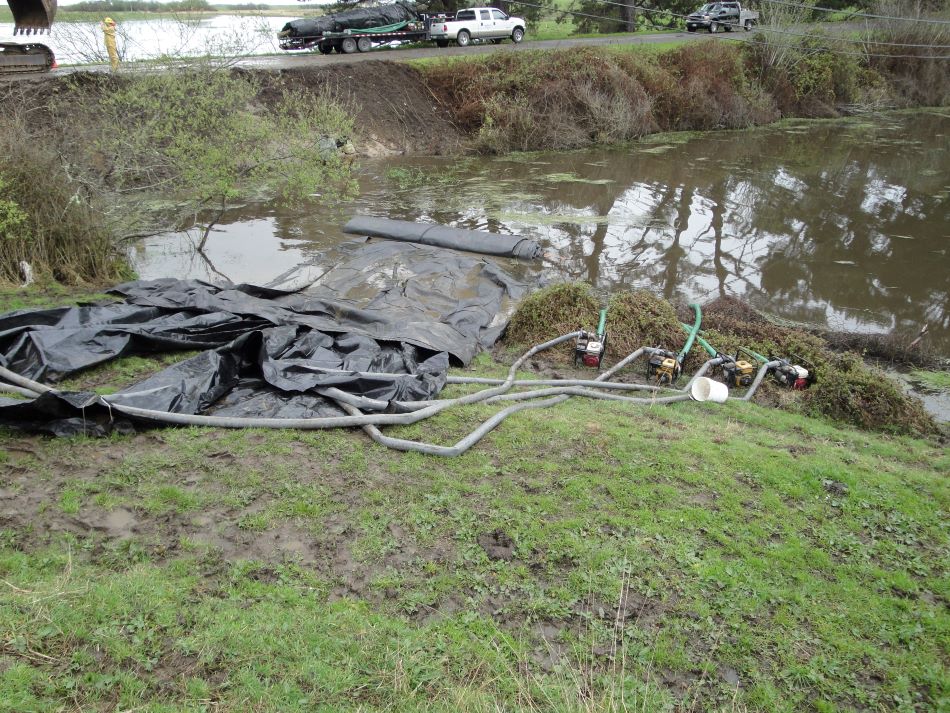
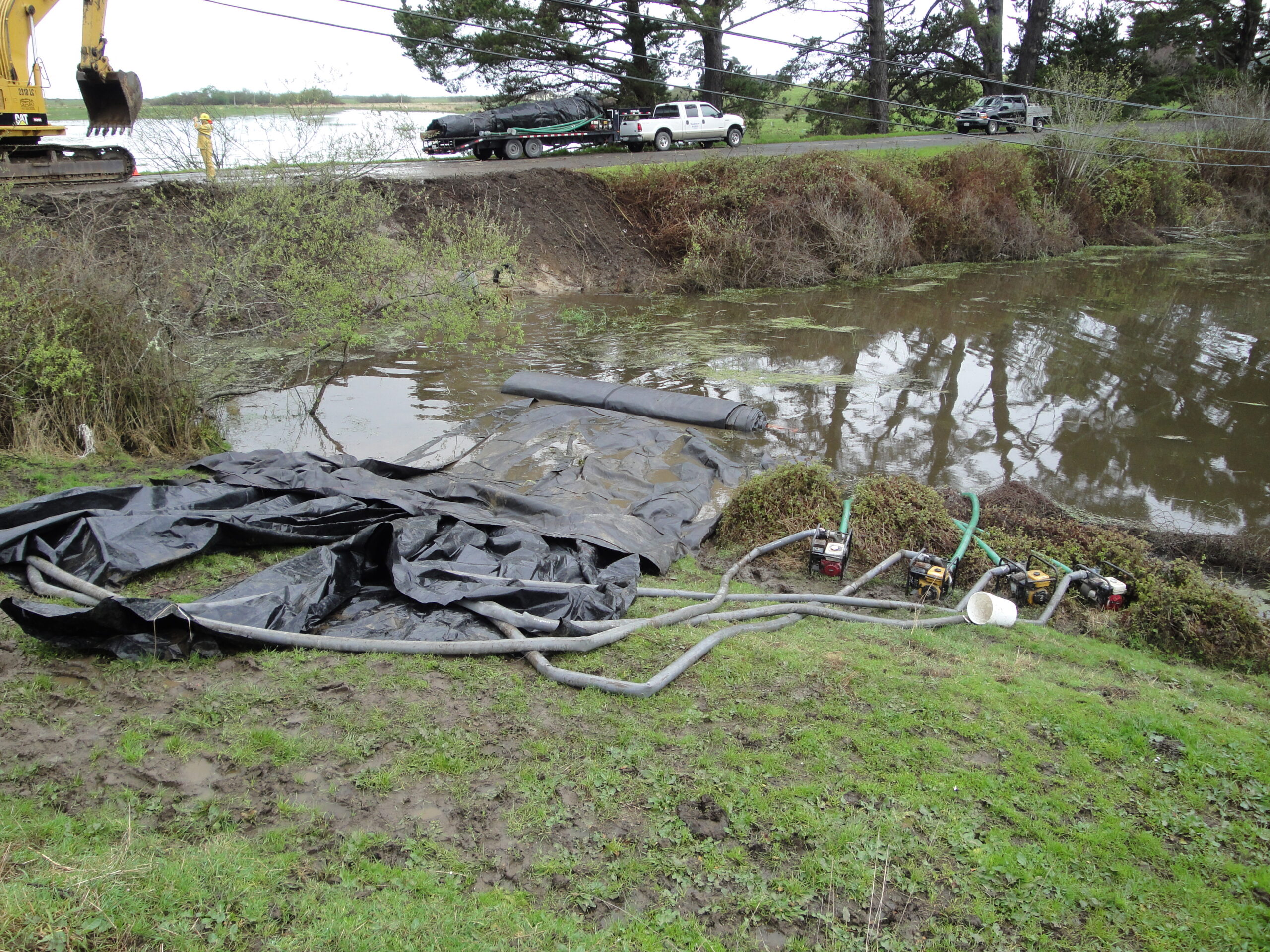
This AquaDam® was the first to be installed. It is being filled with four 3" gas-powered water pumps, 2 in each fill-tube.
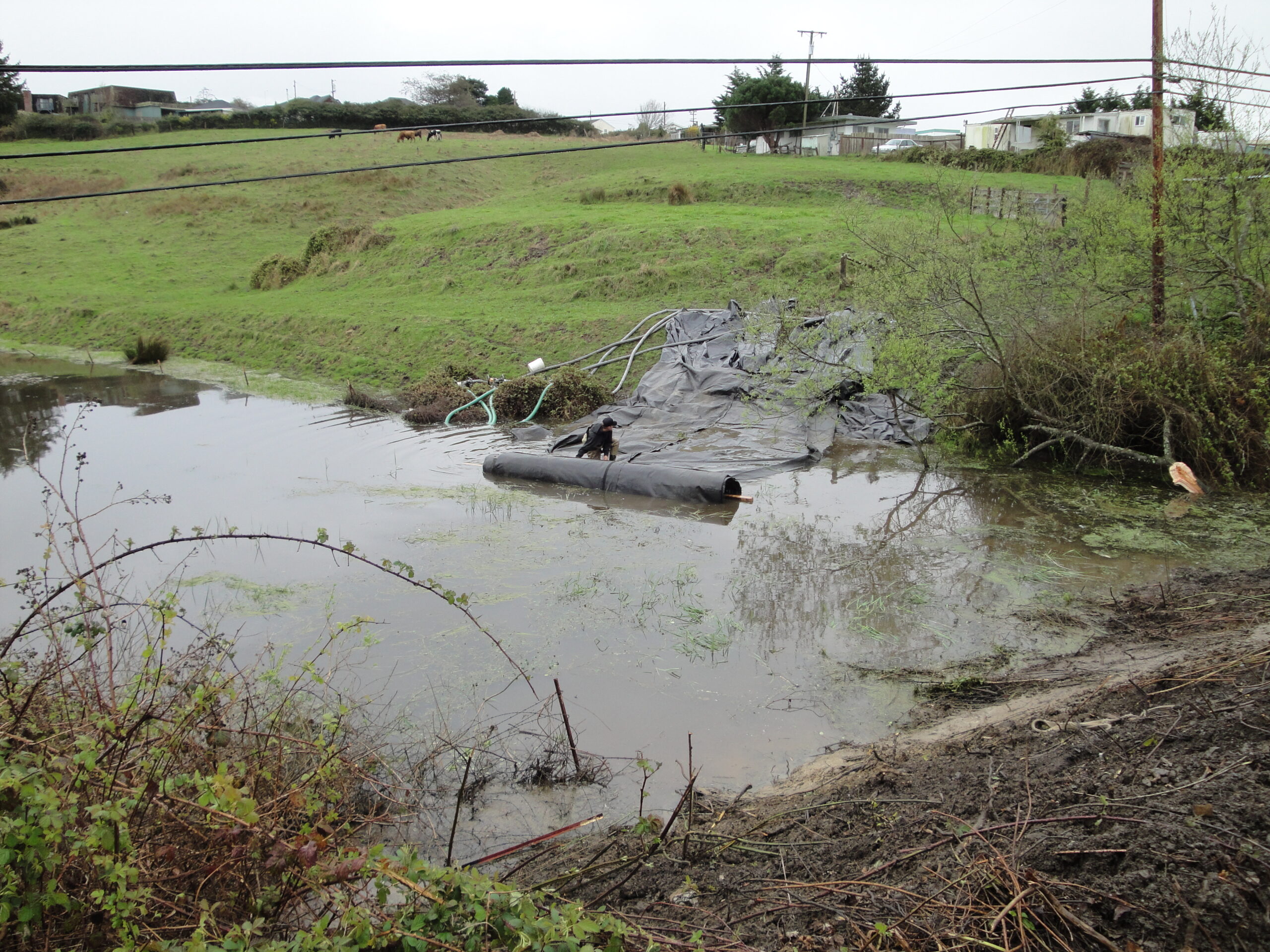
A view from the opposite bank. The area to be isolated is on the right.
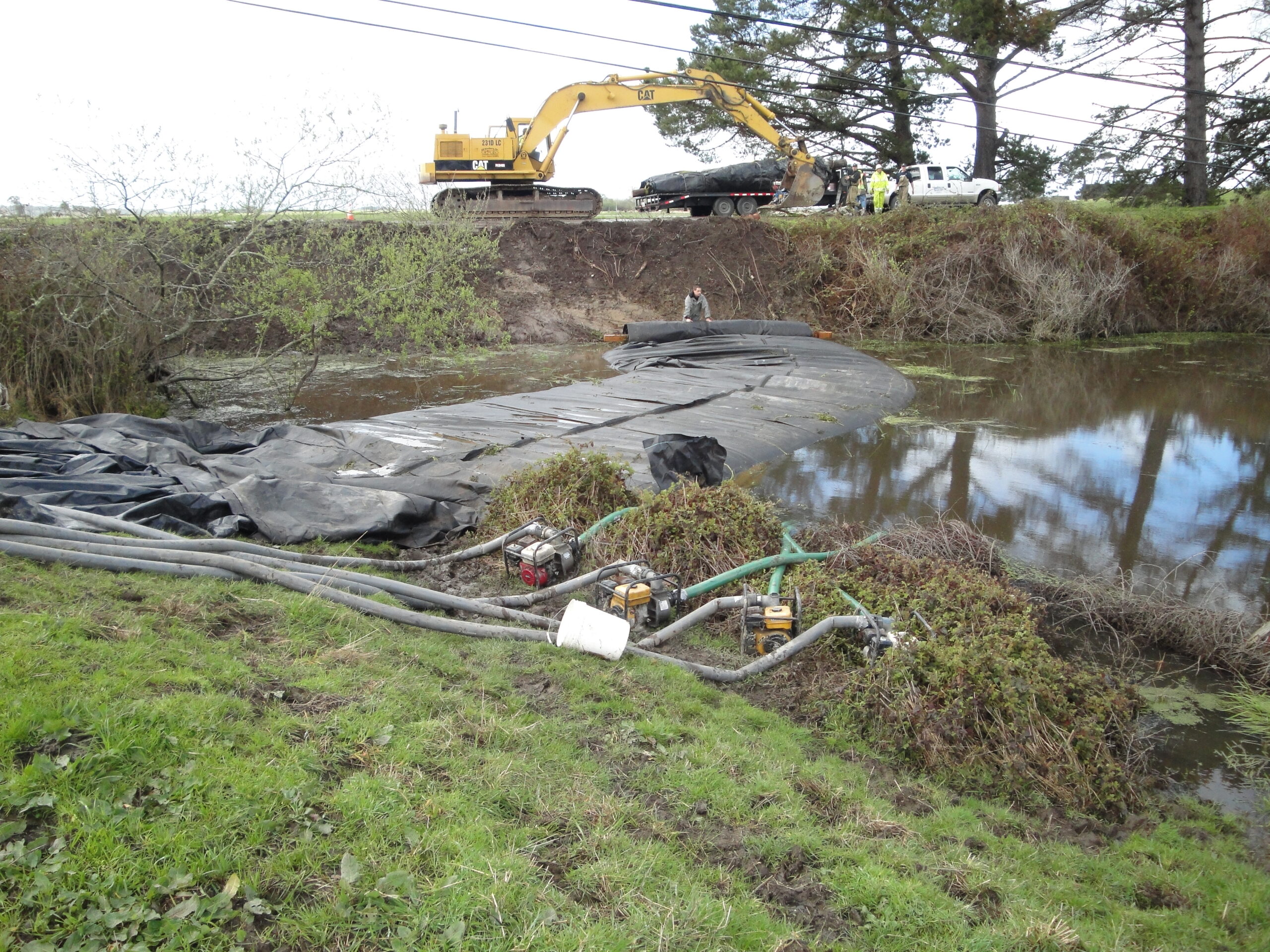
A worker is holding back the unrolled portion of the AquaDam, to allow a larger head to build up.
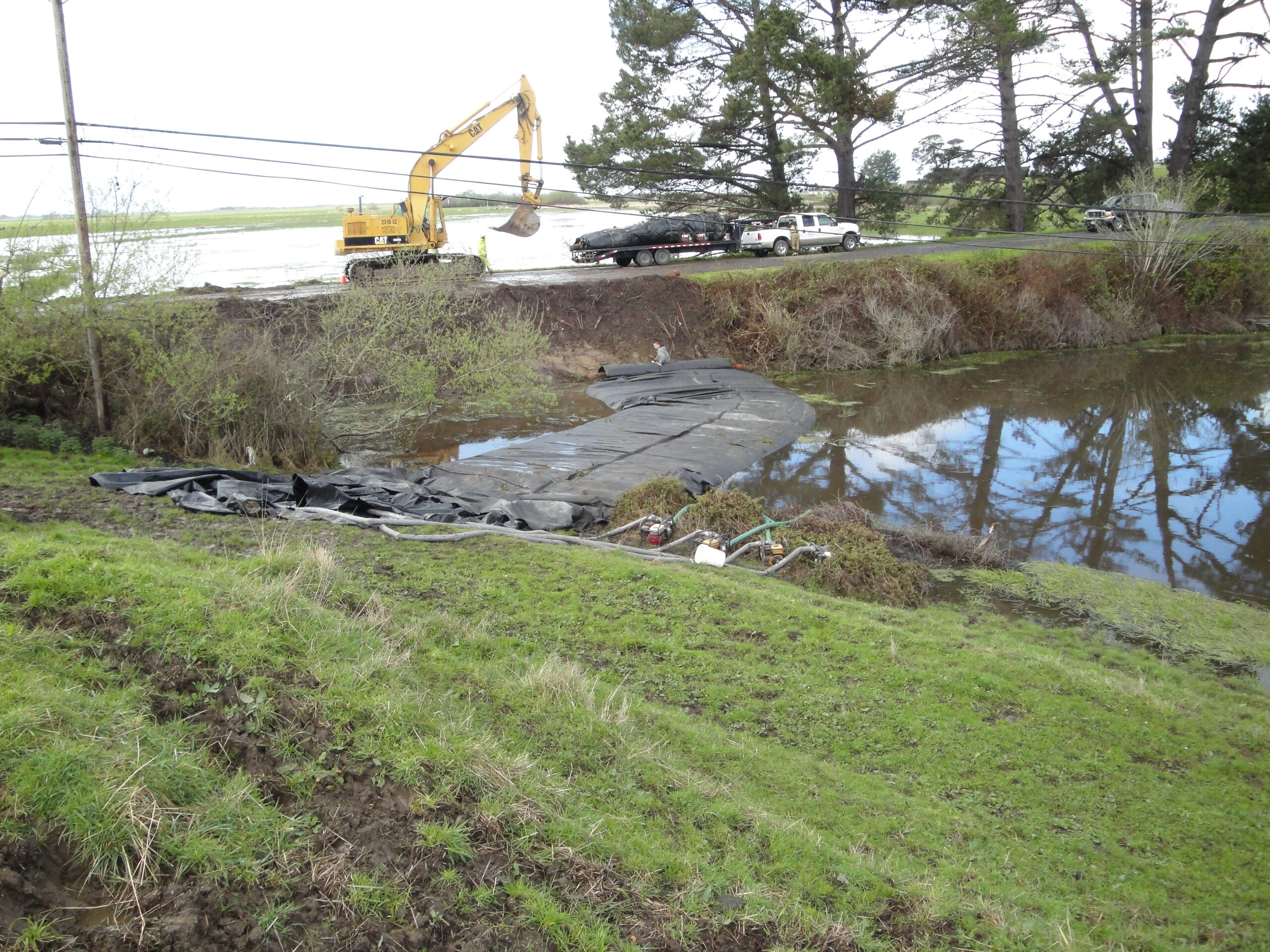
An excavator was enlisted to lift the larger AquaDam® off the trailer.
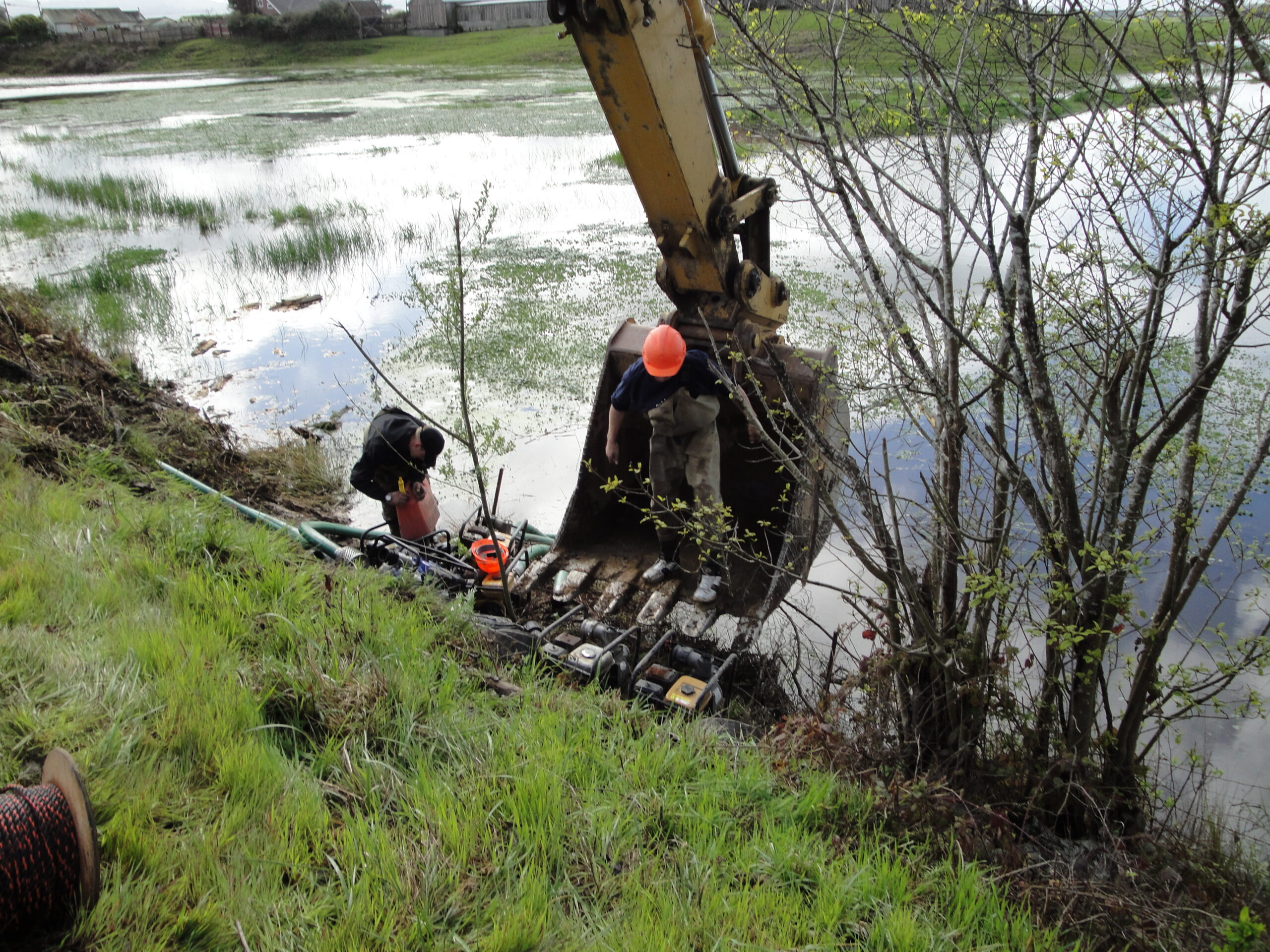
A worker is lowered down the bank, along with four 3" water pumps. A barb-wire fence had to be removed from the starting area, to prevent punctures.
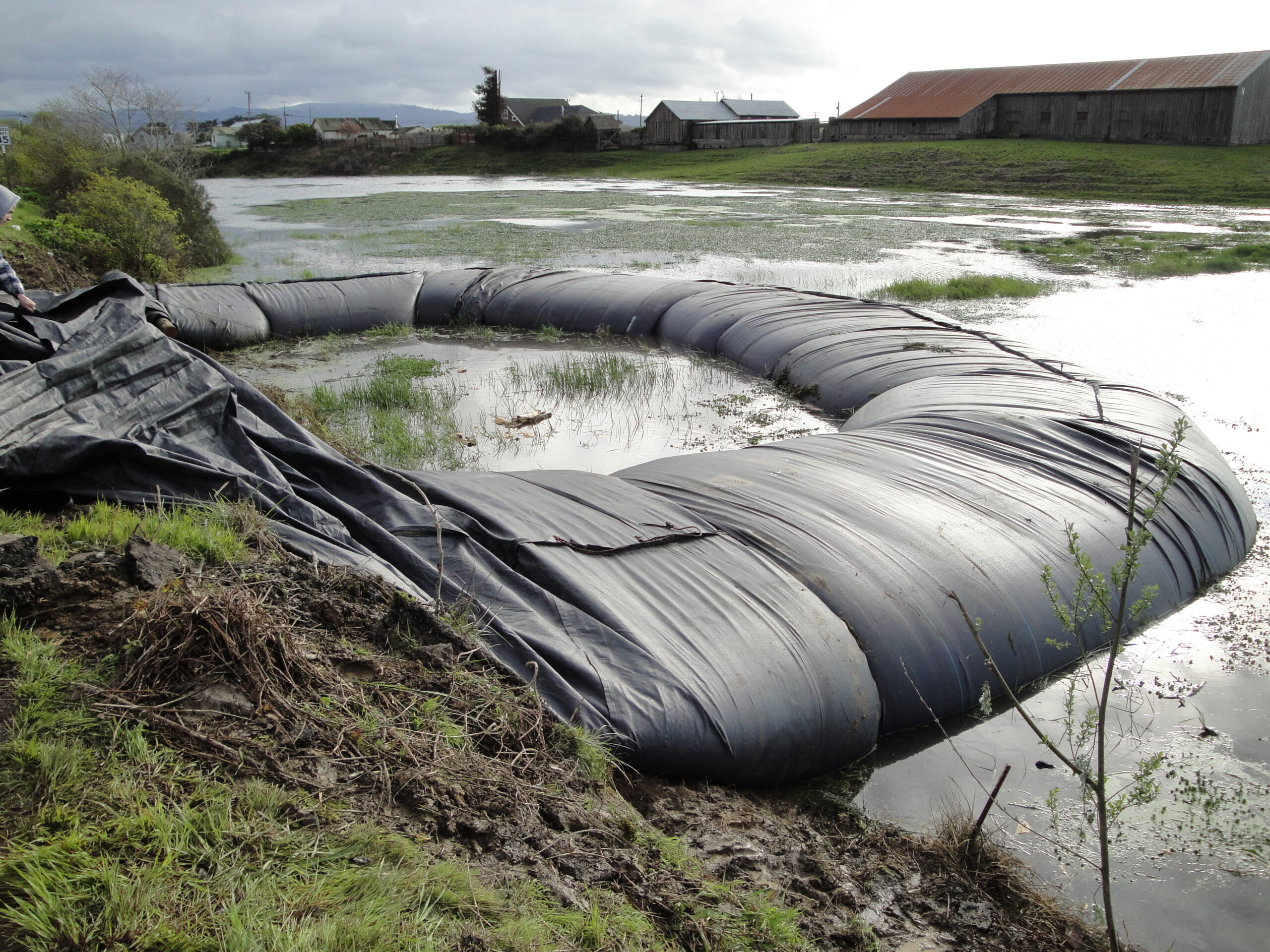
The AquaDam® has been inflated to its full height of 8'. Approximately 5' of the AquaDam® is underwater, with 3' of head. The work area has not been dewatered yet.
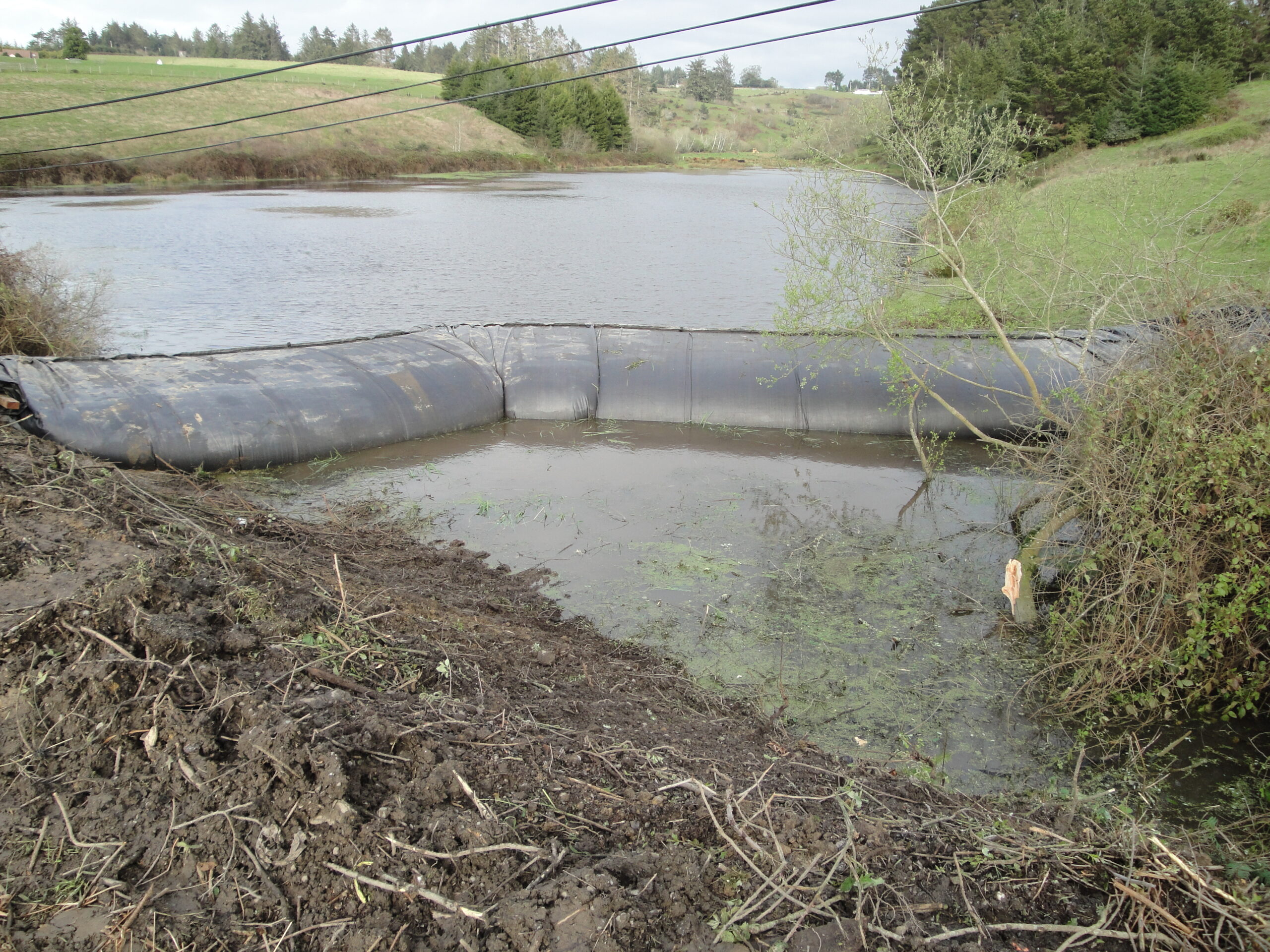
The shorter in height AquaDam® has also been inflated to its full height. AquaDams can be turned during installation to make a curved cofferdam face.
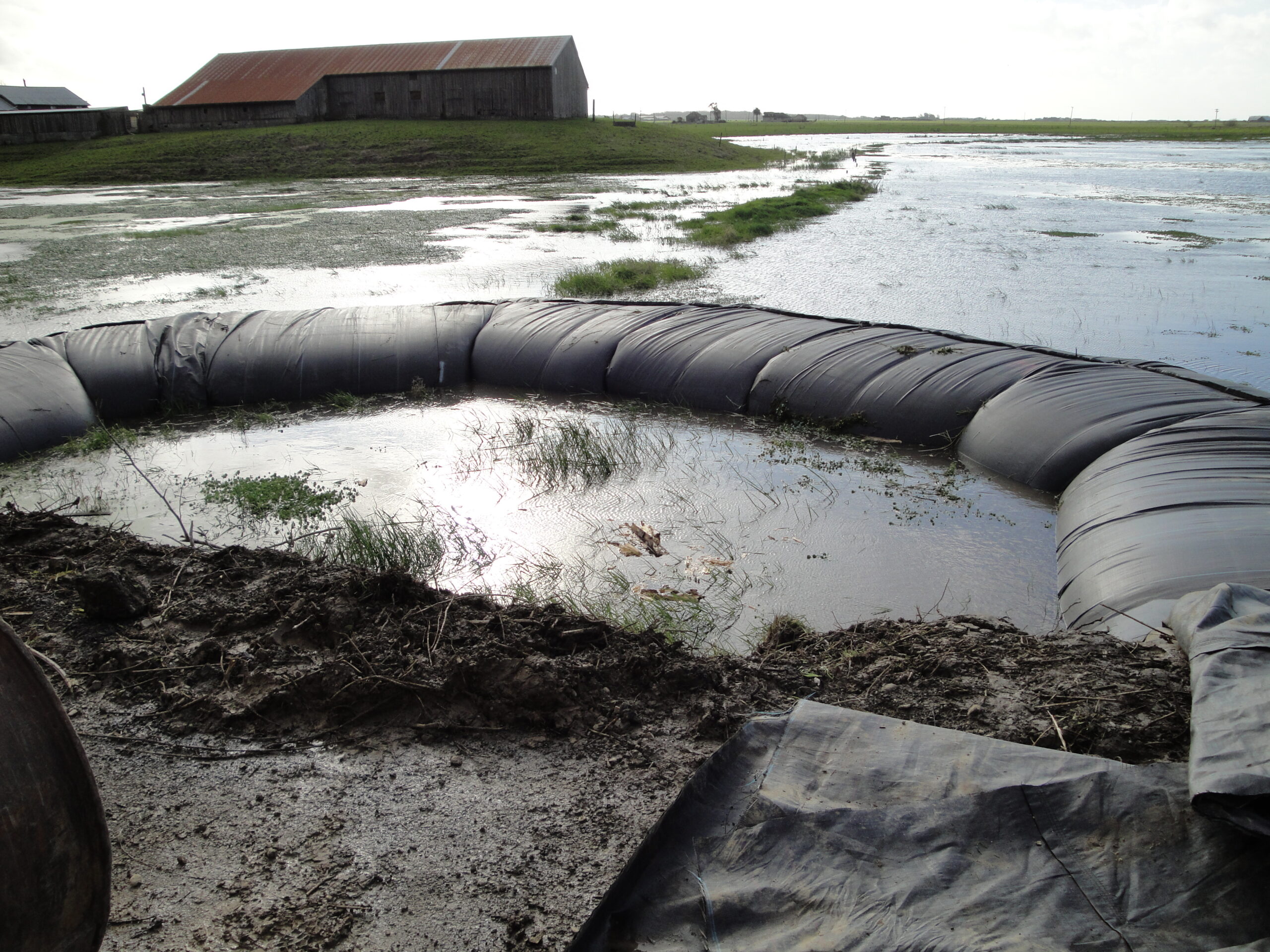
The water levels are equal on both sides of the larger AquaDam. The construction crew will use a water pump to dewater the work area, and install a sump pump at a low point to handle seepage.
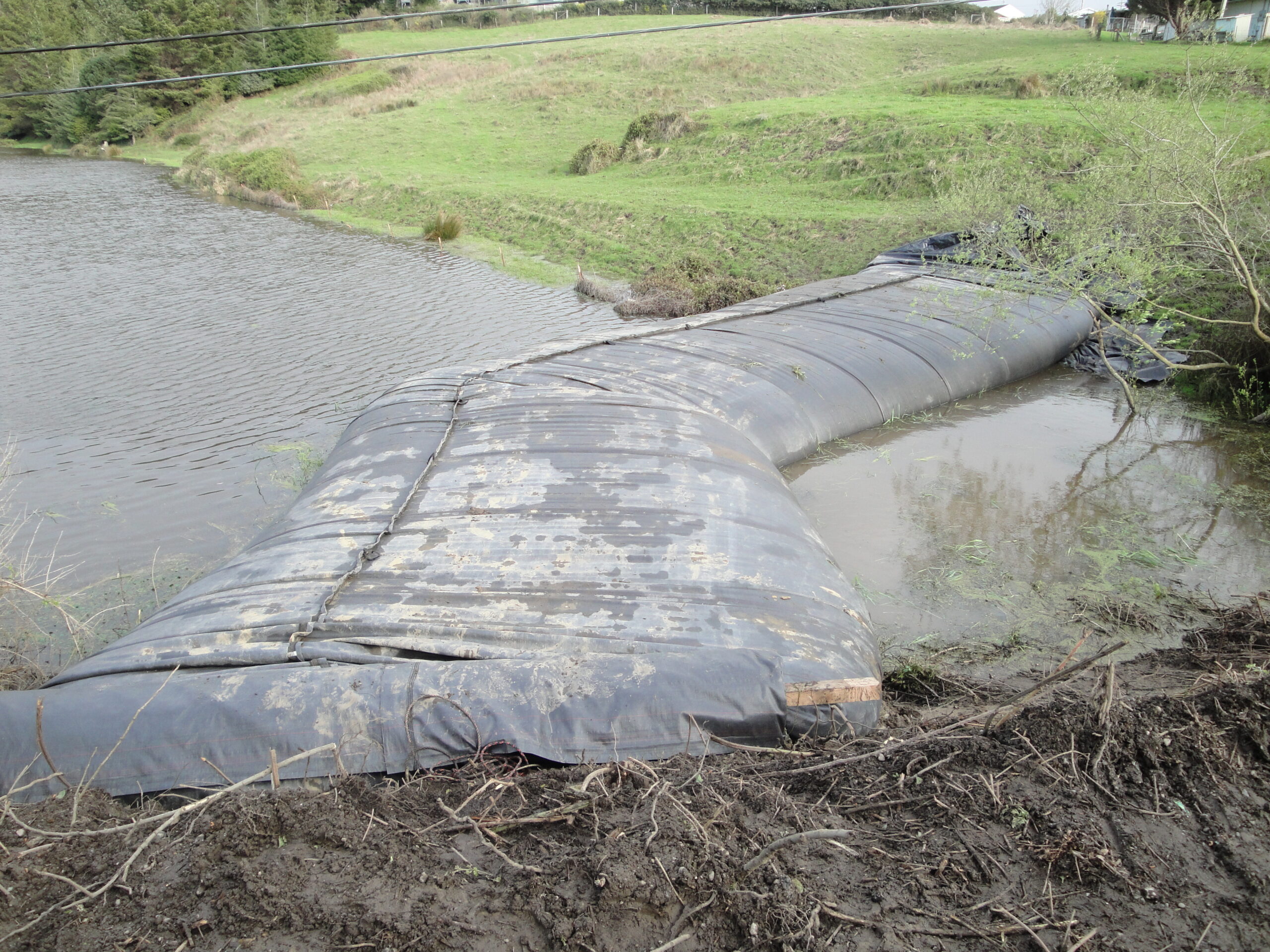
Water levels are equal on both sides of this AquaDam® as well.
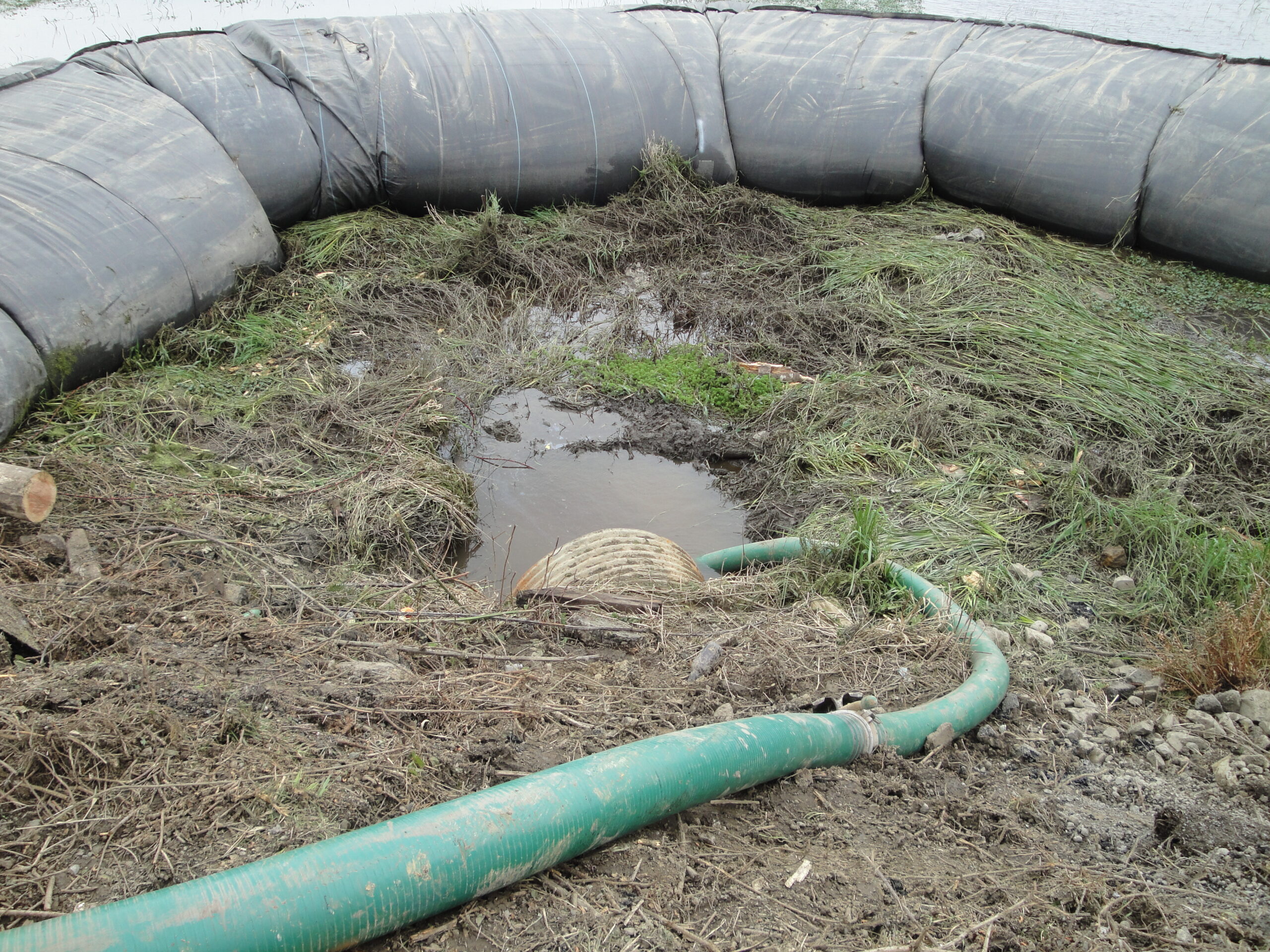
The green hose is a rigid suction hose, approximately 3"-4" in diameter. Such a hose and pump is more than is needed to keep the area dewatered
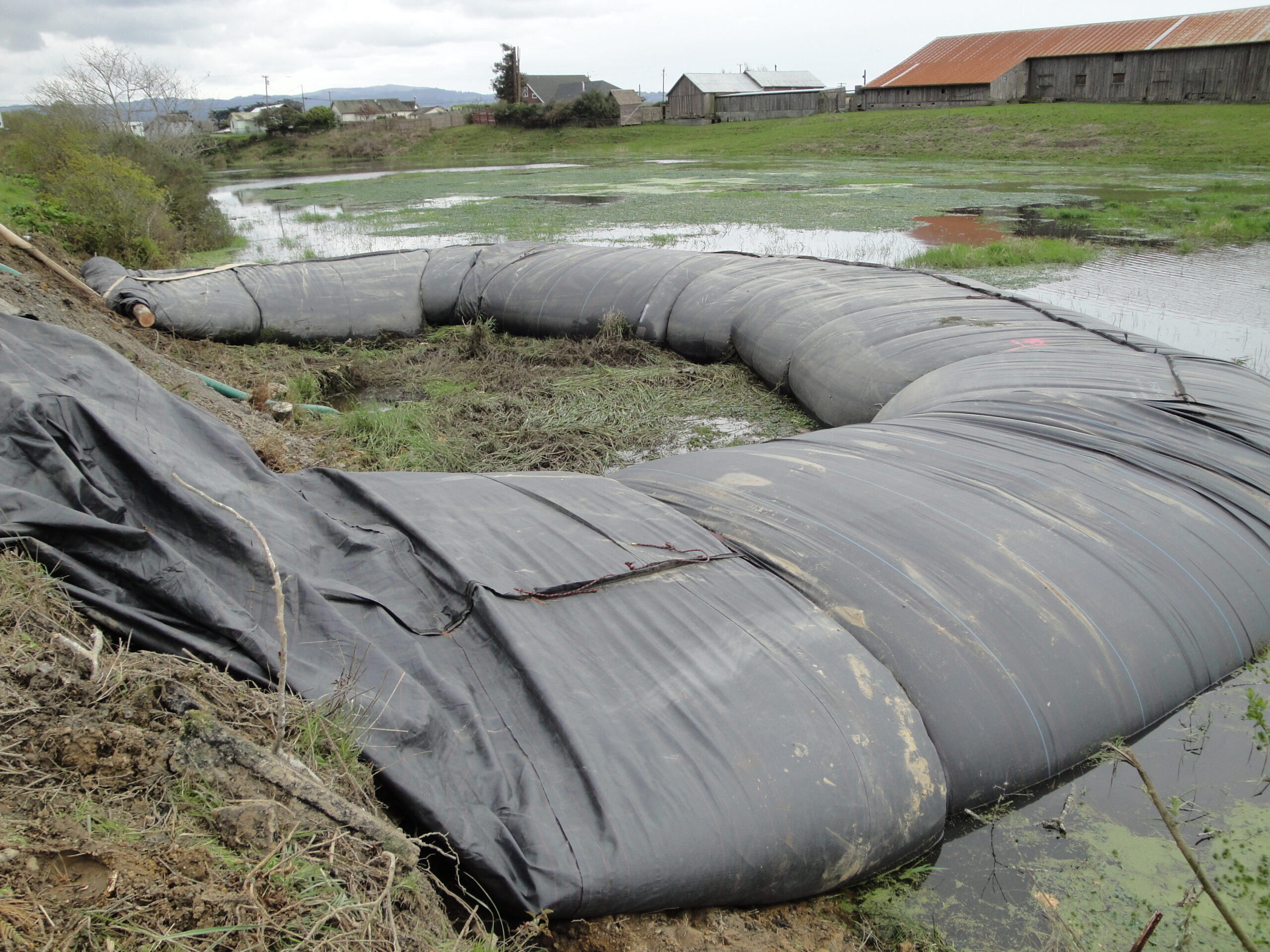
The work area is almost totally dewatered.
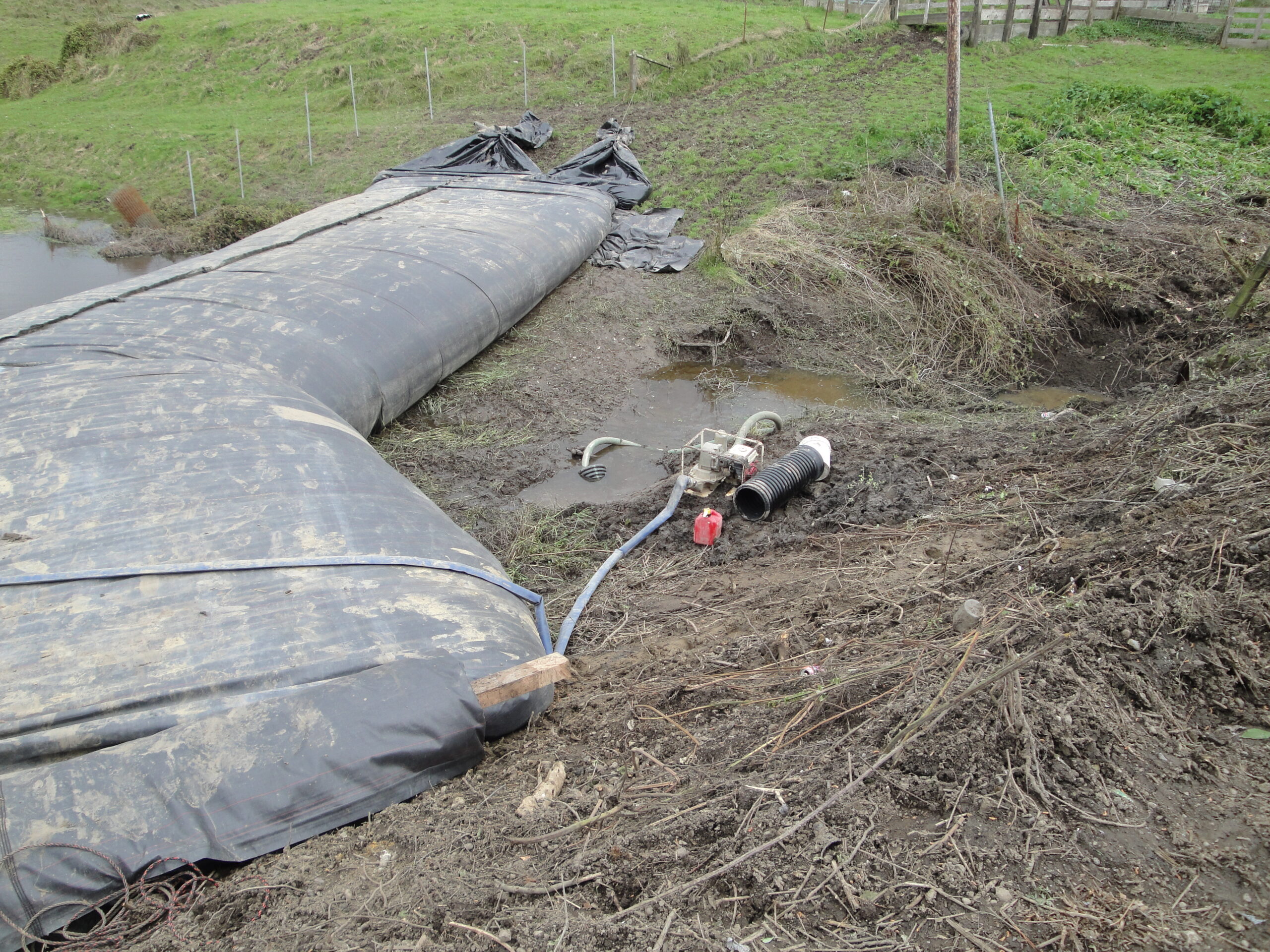
A gas-powered 3" pump is pumping from the low point of this side of the work area. There is minimal seepage under the AquaDam, and this pump won't be here for long.
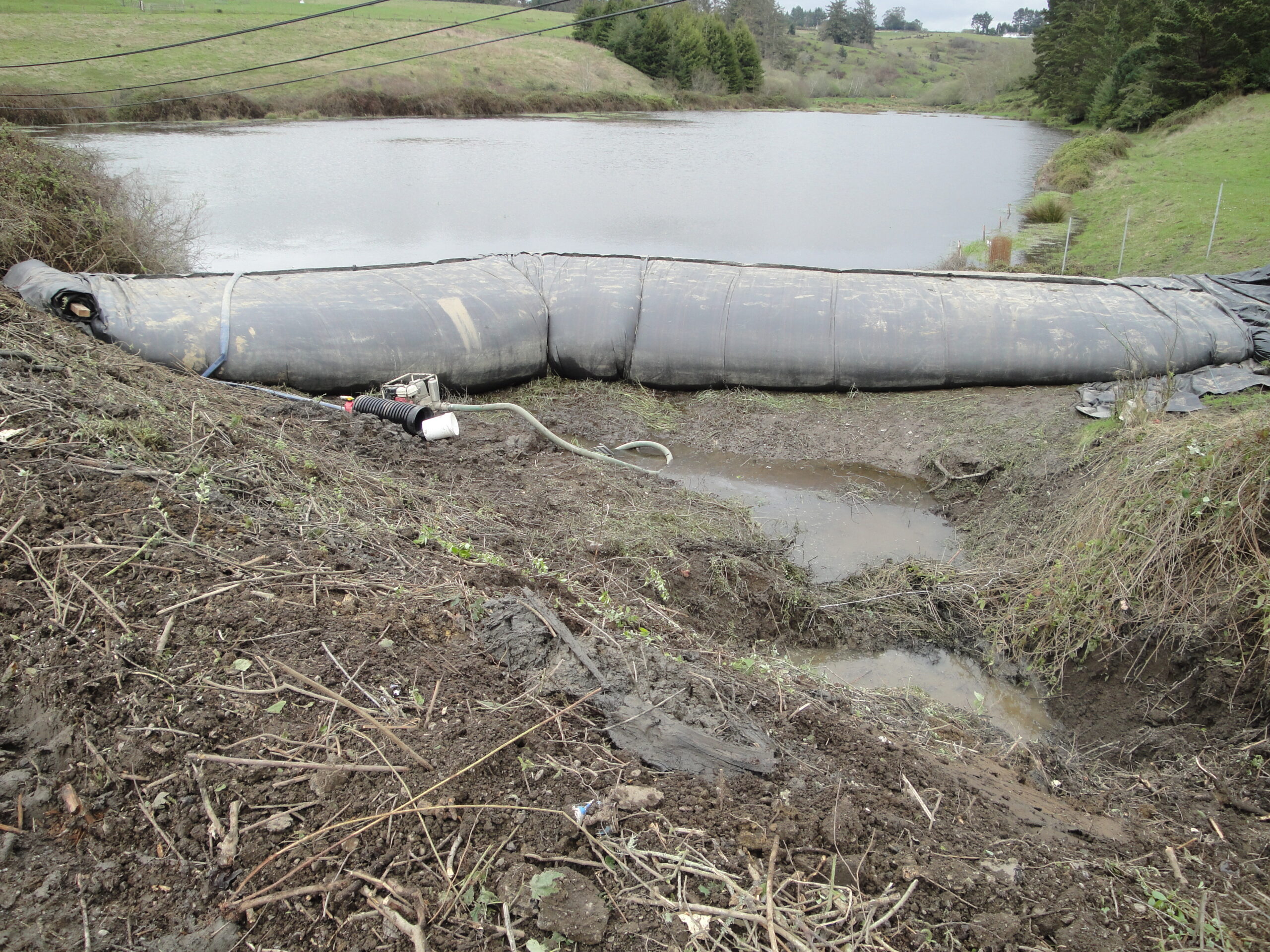
Another view of the dewatered work area.
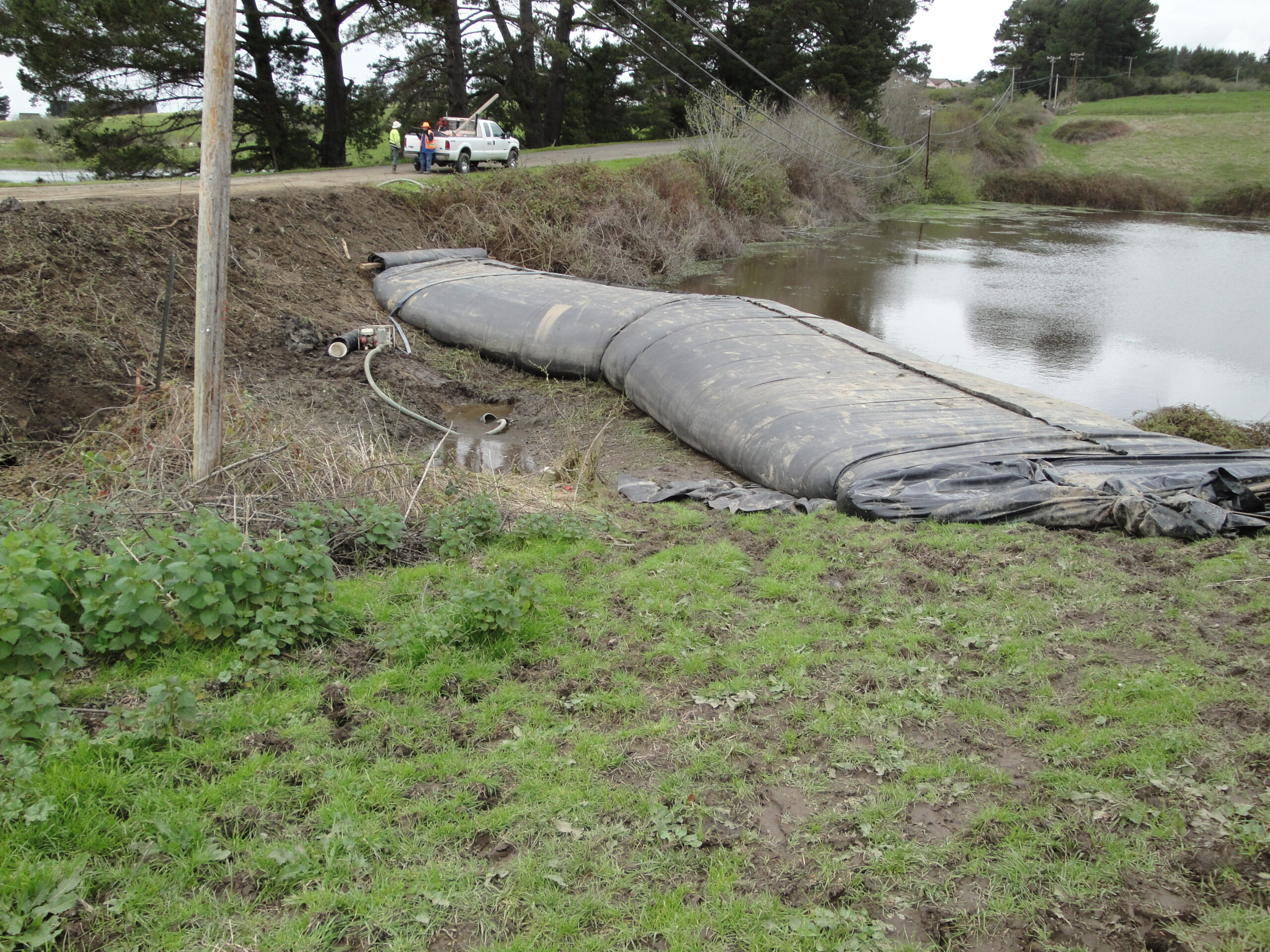
Another angle showing the AquaDam® and the dewatered work area.
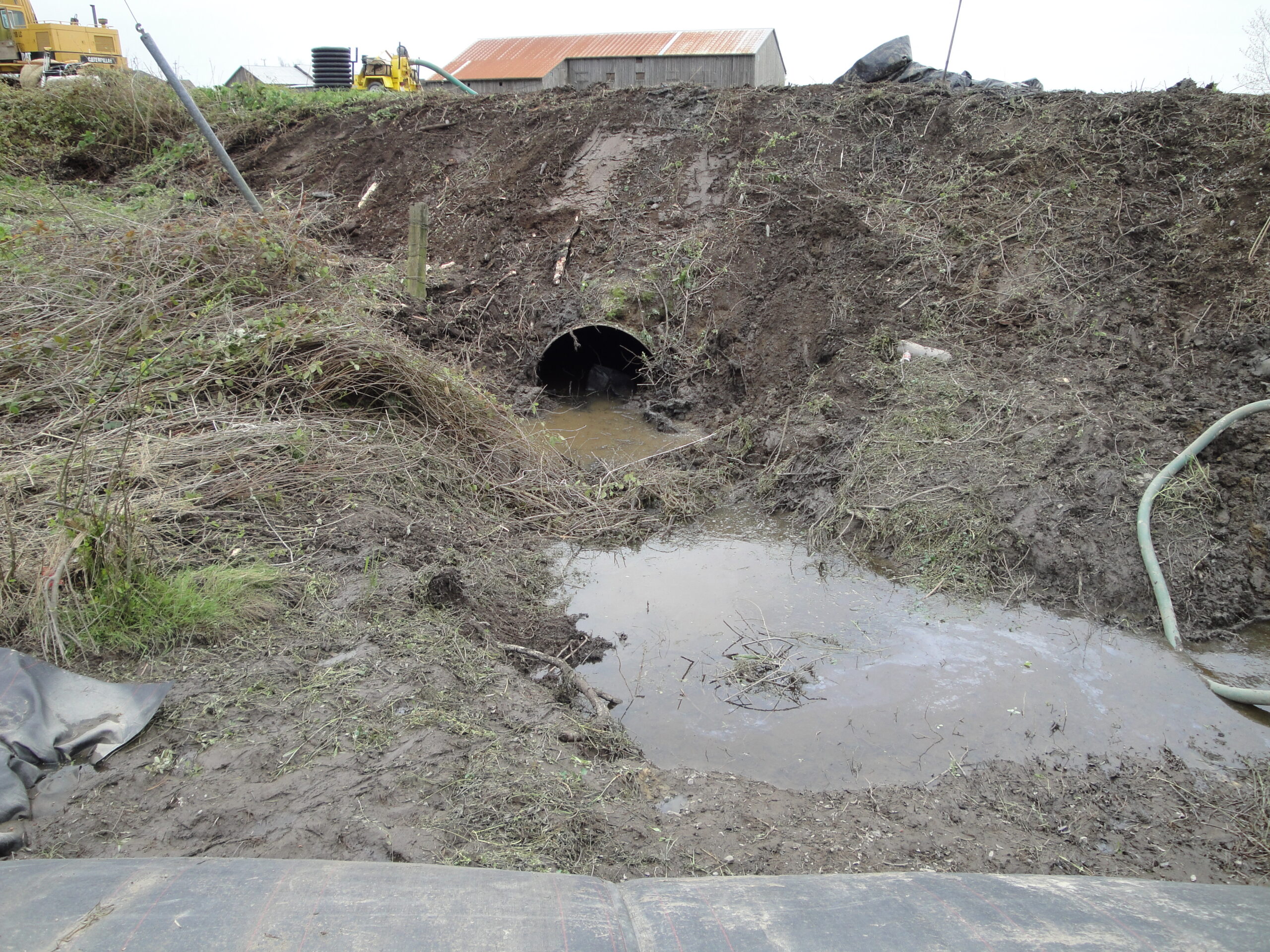
The opening of the ancient culvert which is going to be replaced during the course of this job.
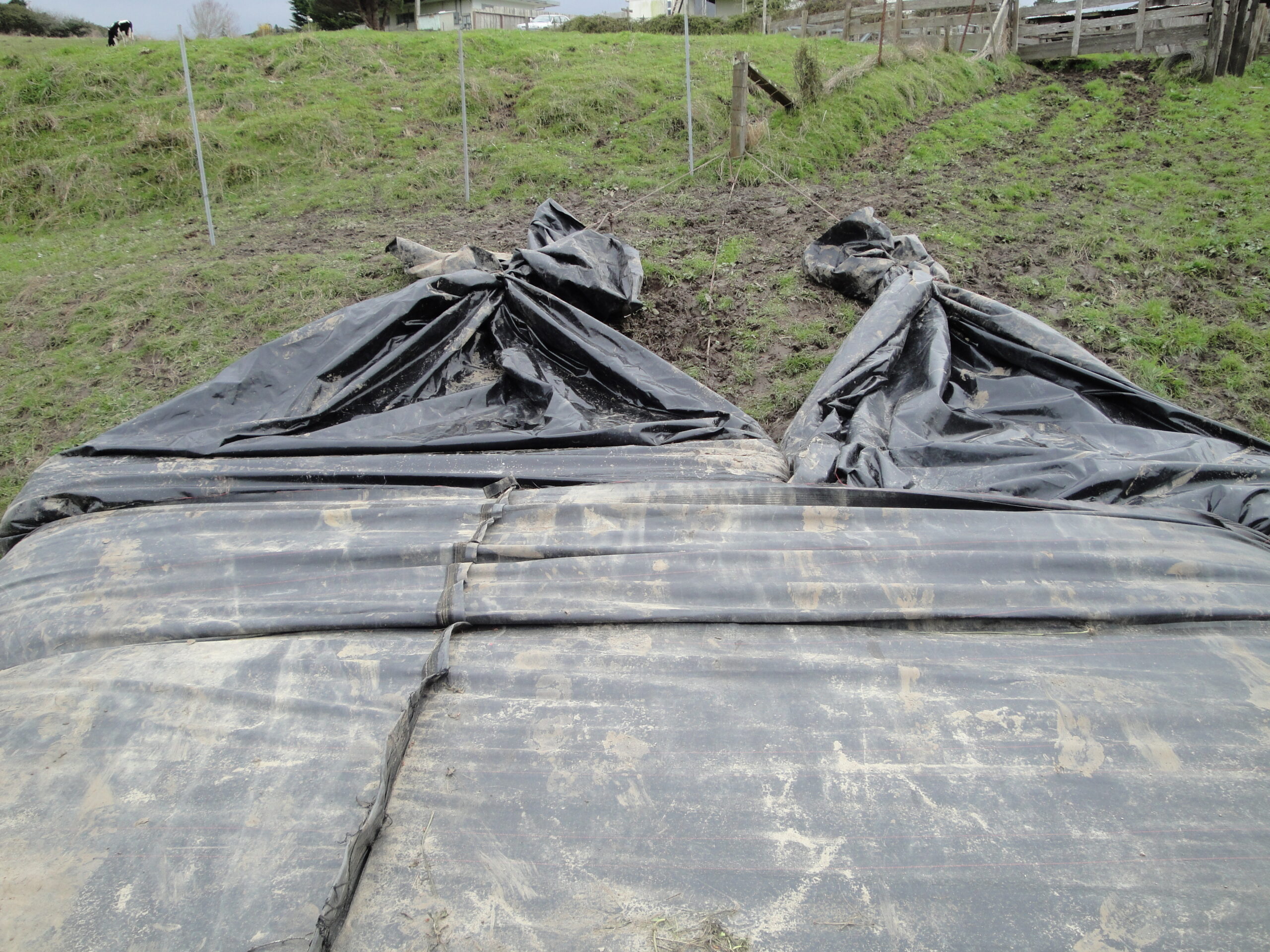
The fill tubes of the lesser AquaDam. These have been pulled up and tied to a fencepost to keep them higher than the rest of the AquaDam. If they weren't secured, they might allow water to drain from the AquaDam.
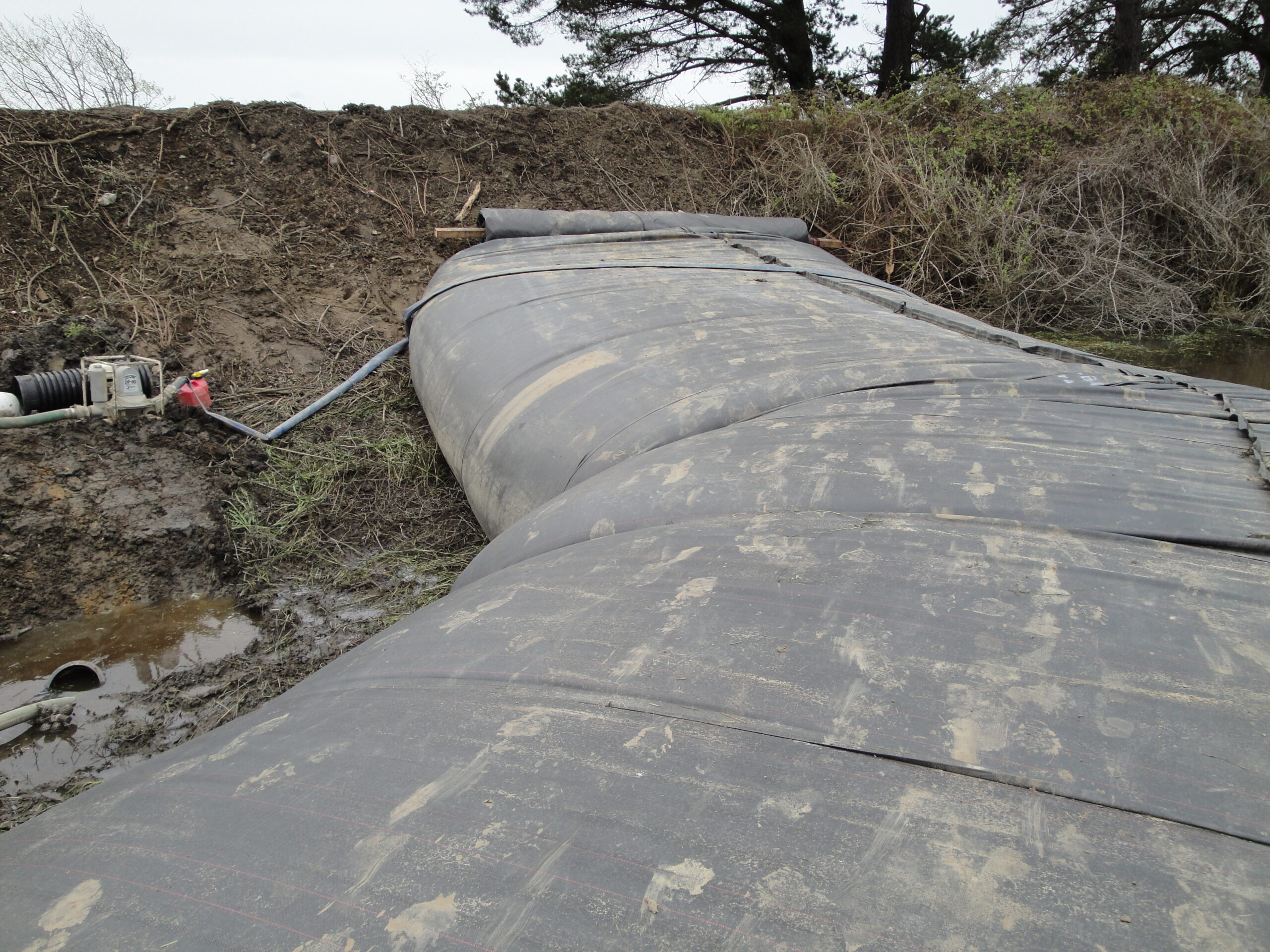
The AquaDam® bears evidence of the amount of foot-traffic it has borne
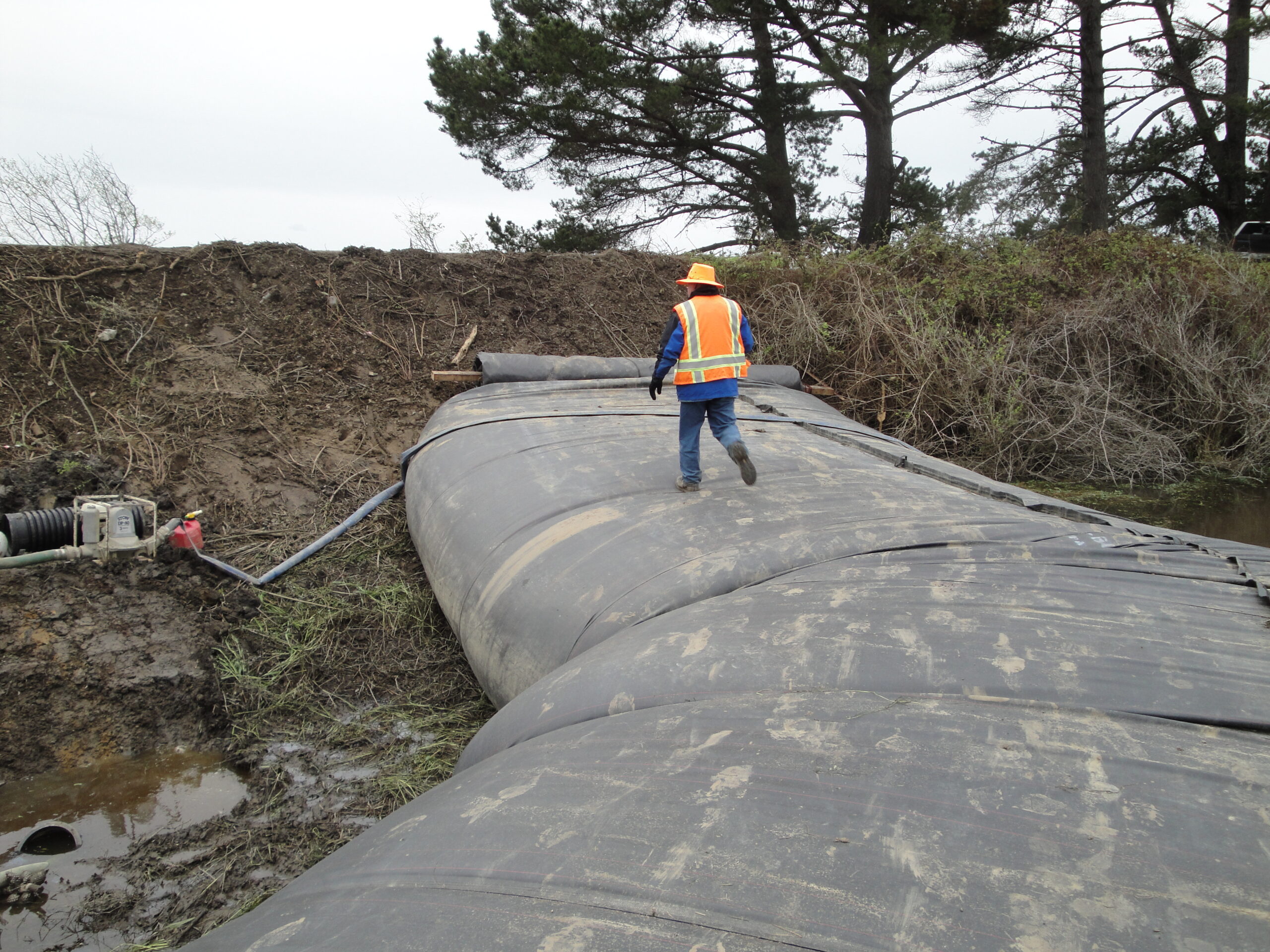
The county inspector, inspecting. Walking on the AquaDam® takes a little bit of getting used to, but is generally safe.
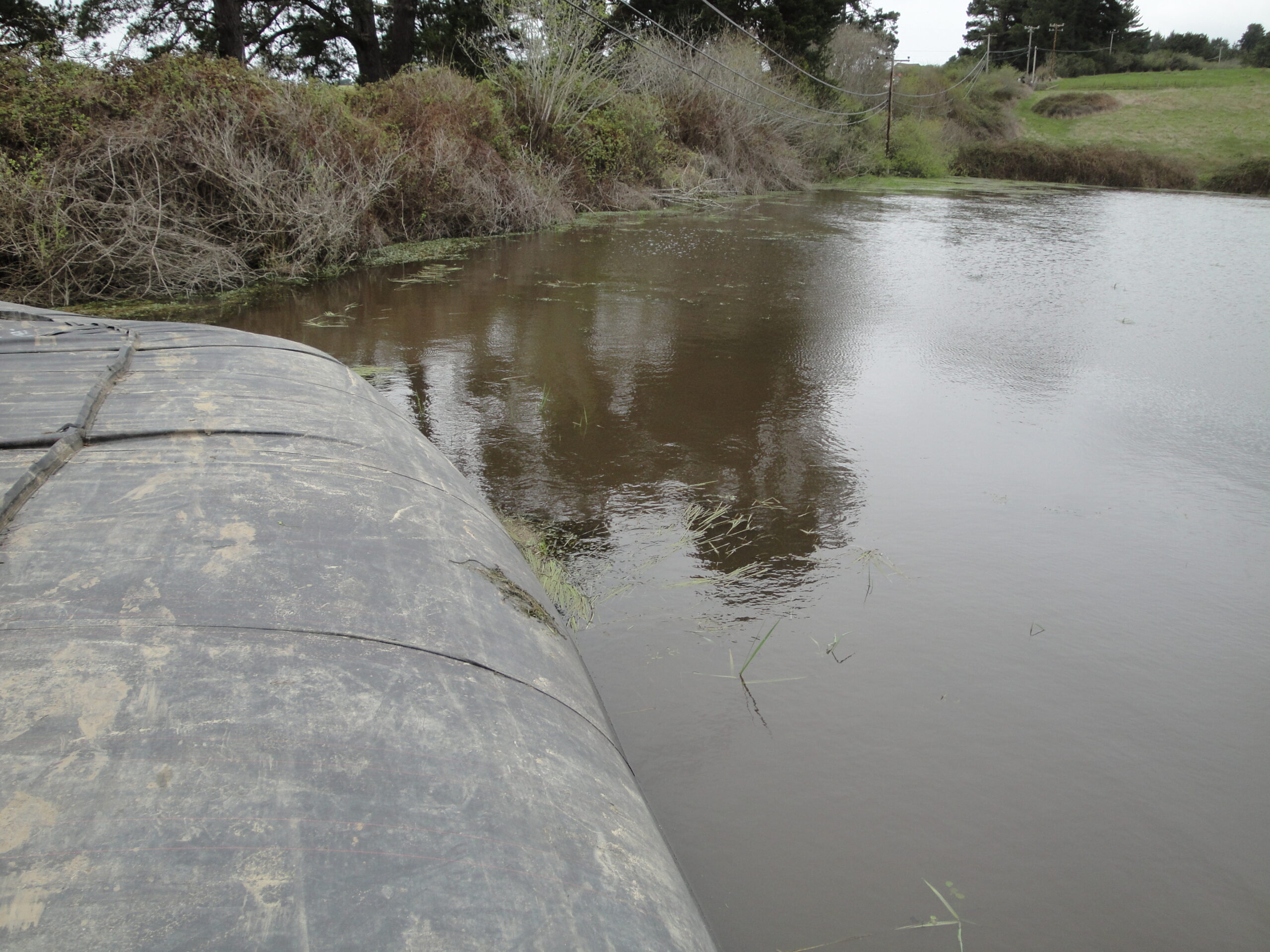
This body of water has been isolated from the greater body downstream (through the culvert). Do to smaller creeks and streams draining into this body of water, the contractors had to pump the height of the water down to prevent water depths greater than what the AquaDam® is designed to handle.
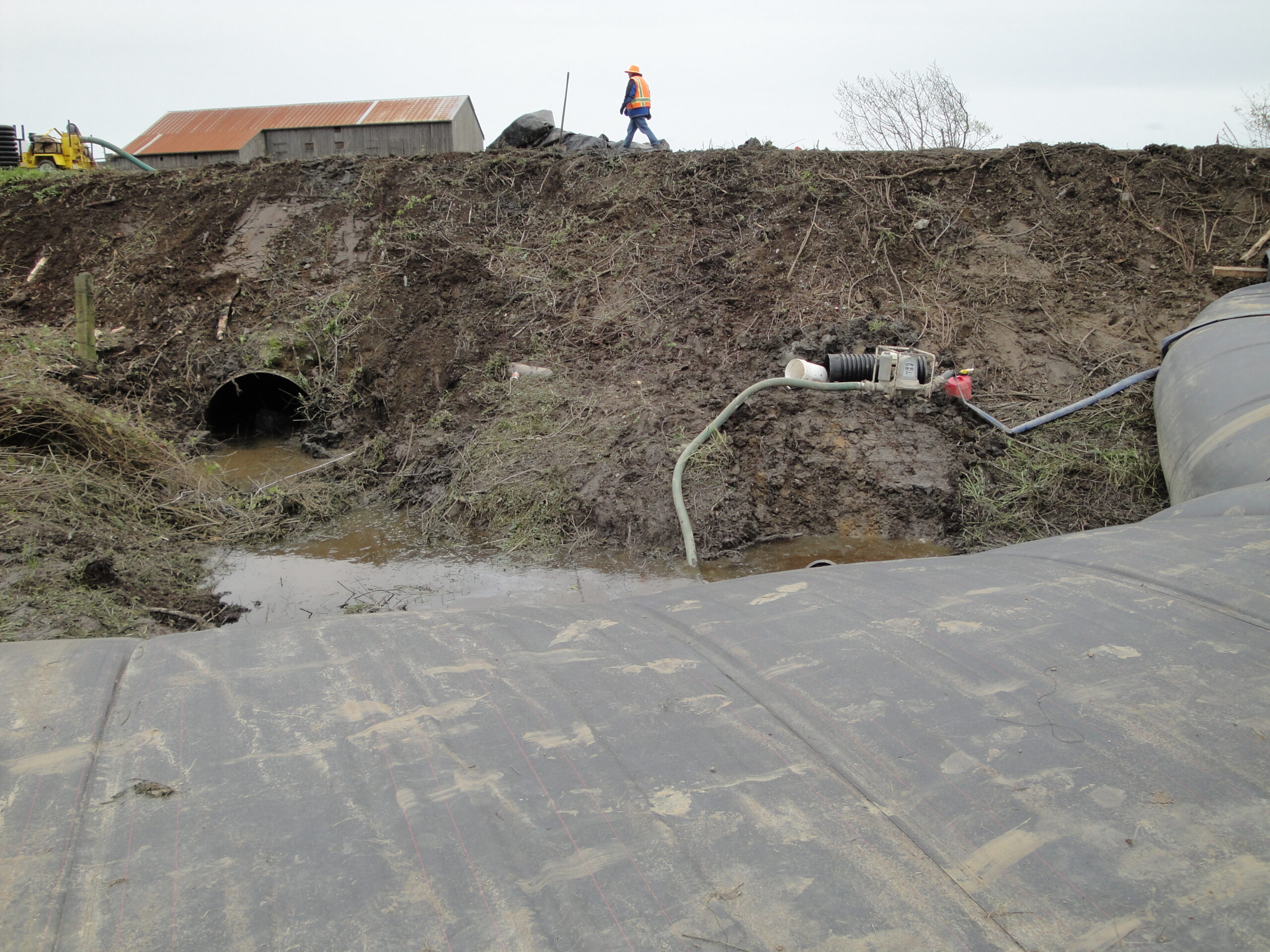
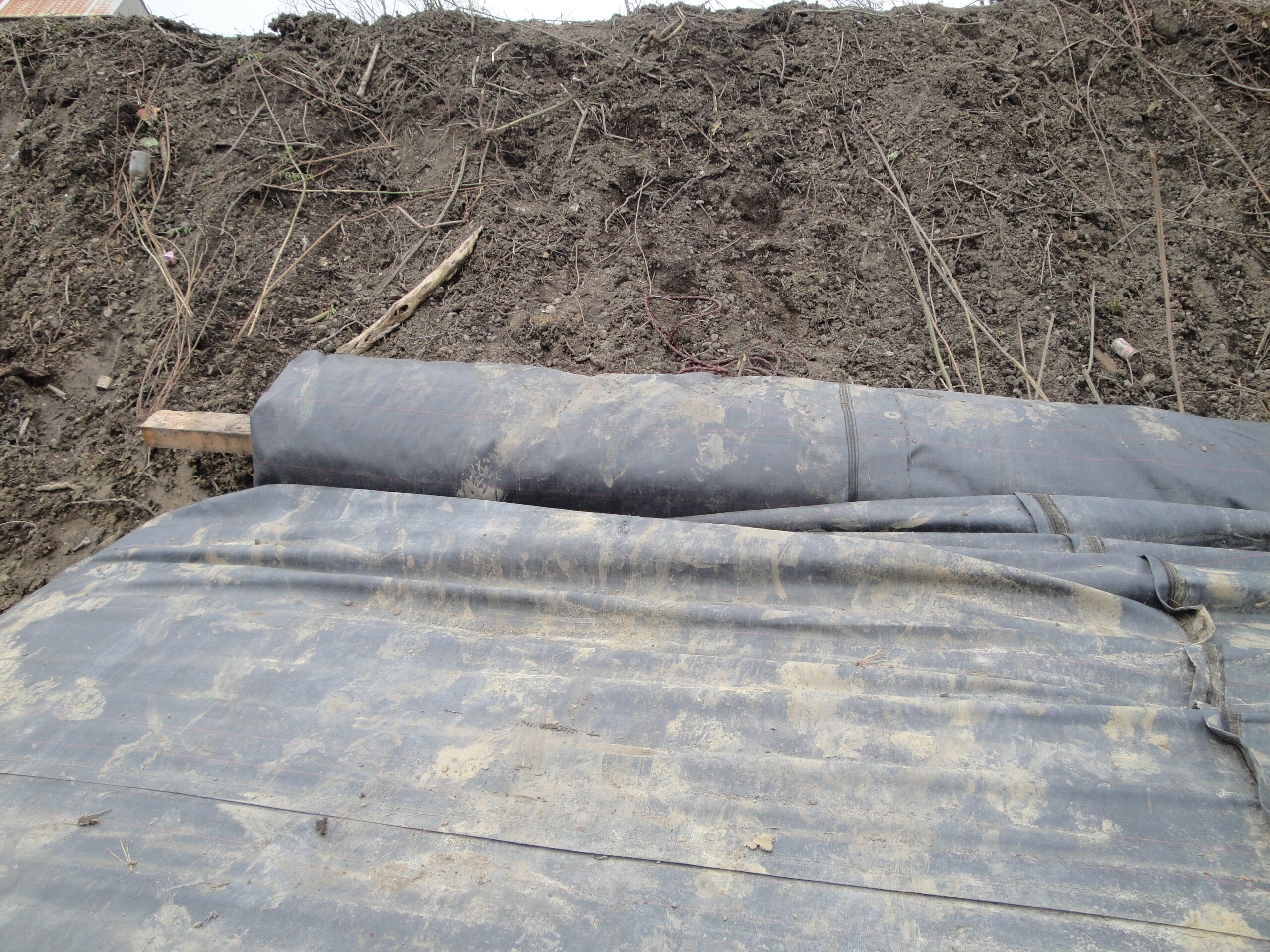
The unused portion of the AquaDam® remains rolled up, midway up the bank.
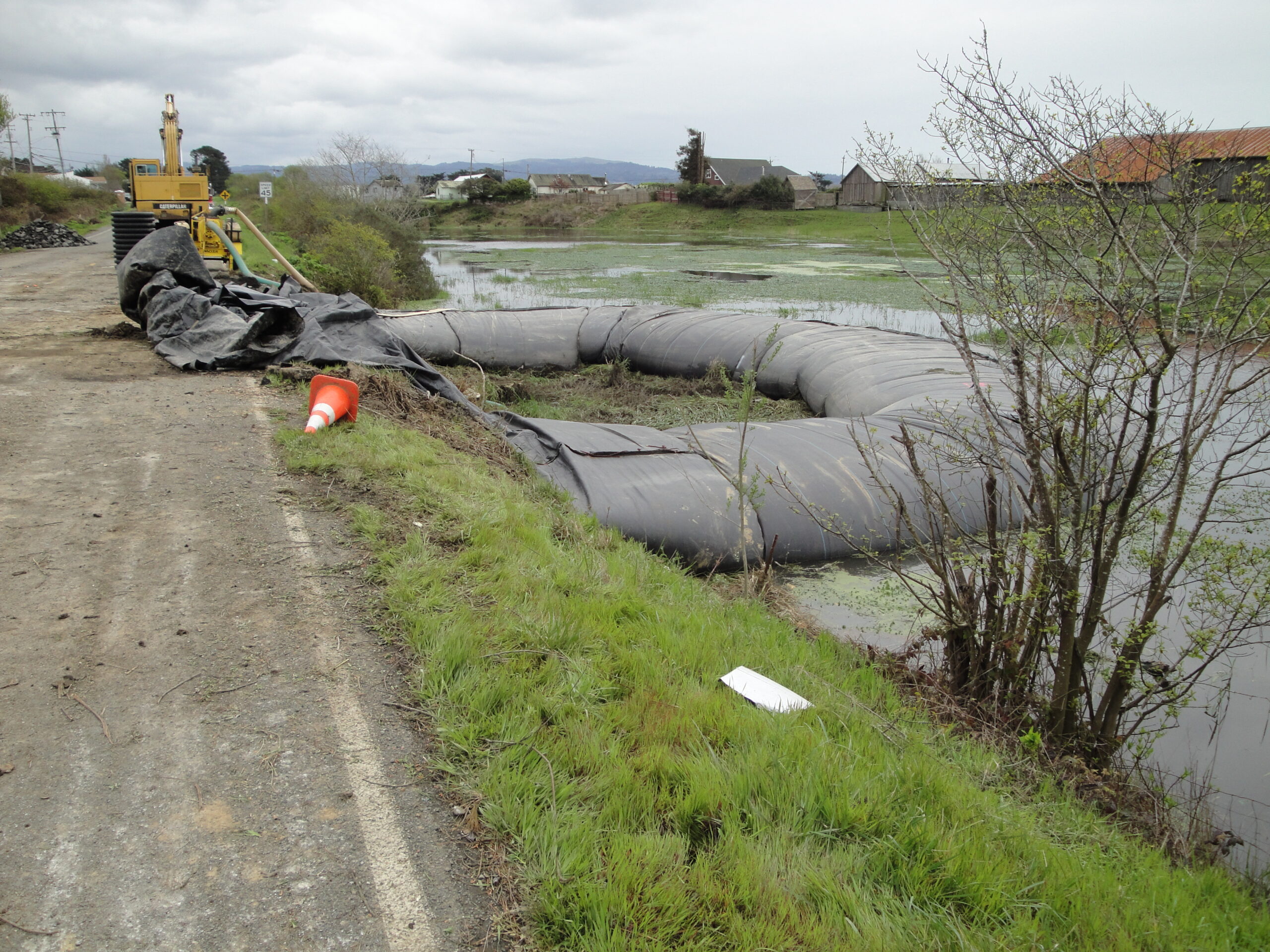
AquaDams do not leach anything into water contained within them. Water used to fill an AquaDam® can be released back into the body of water it was taken from.

Closer view of dewatered work area.
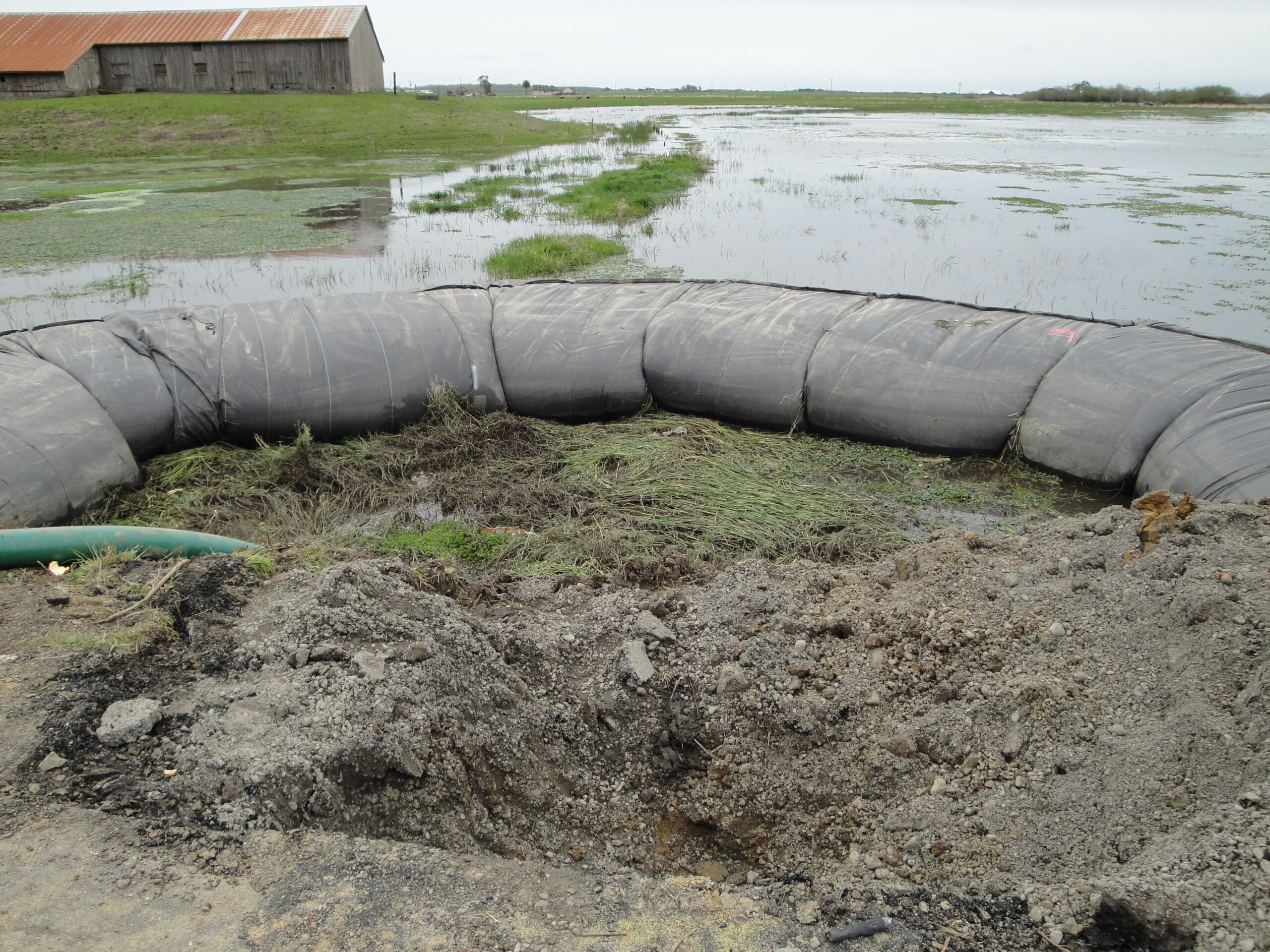
Looks like the road is being destroyed to gain access to the culvert for removal.
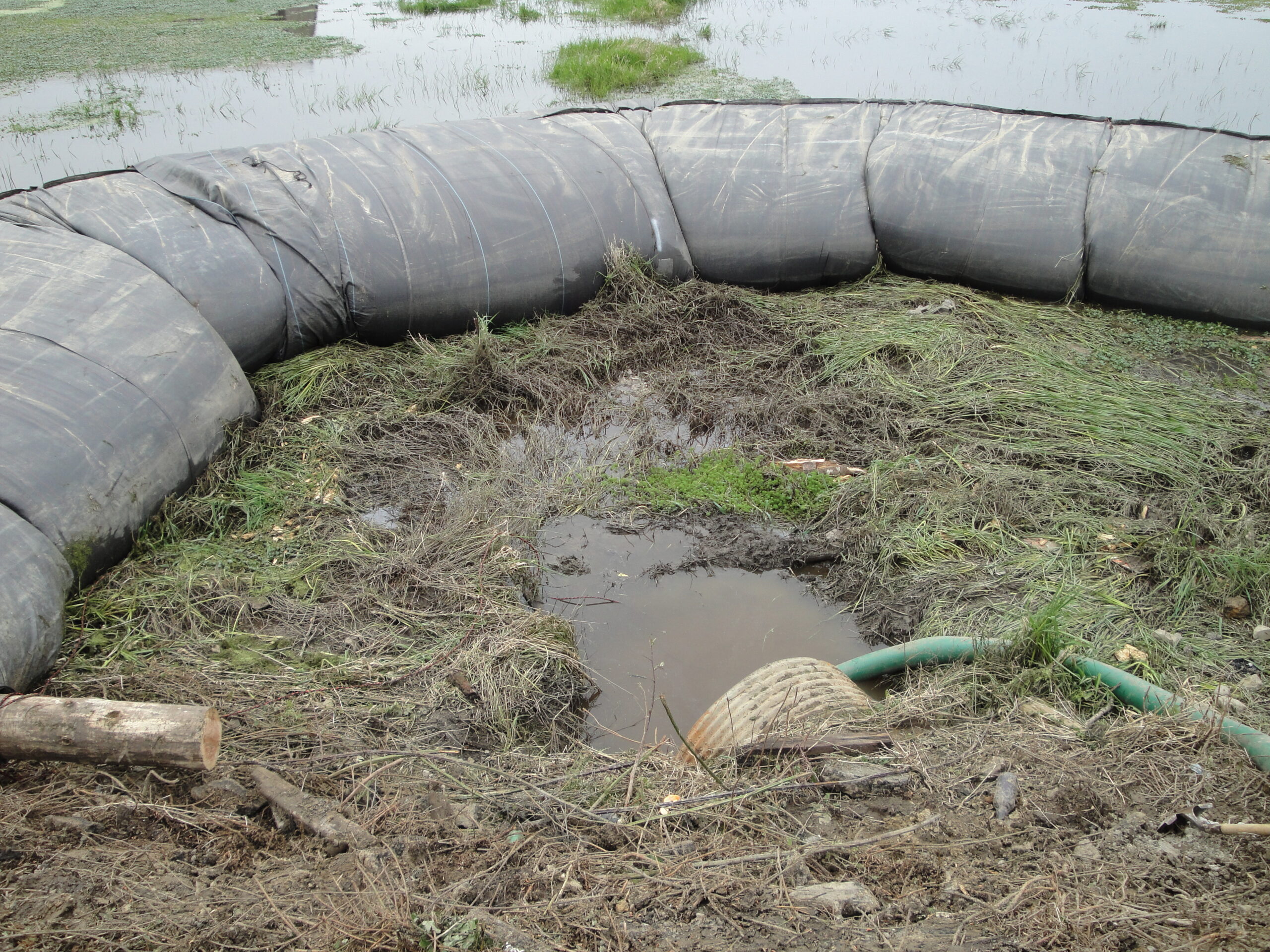
The work area is almost totally dewatered, with all water in the work area collecting at the low point, right in front of the old culvert.
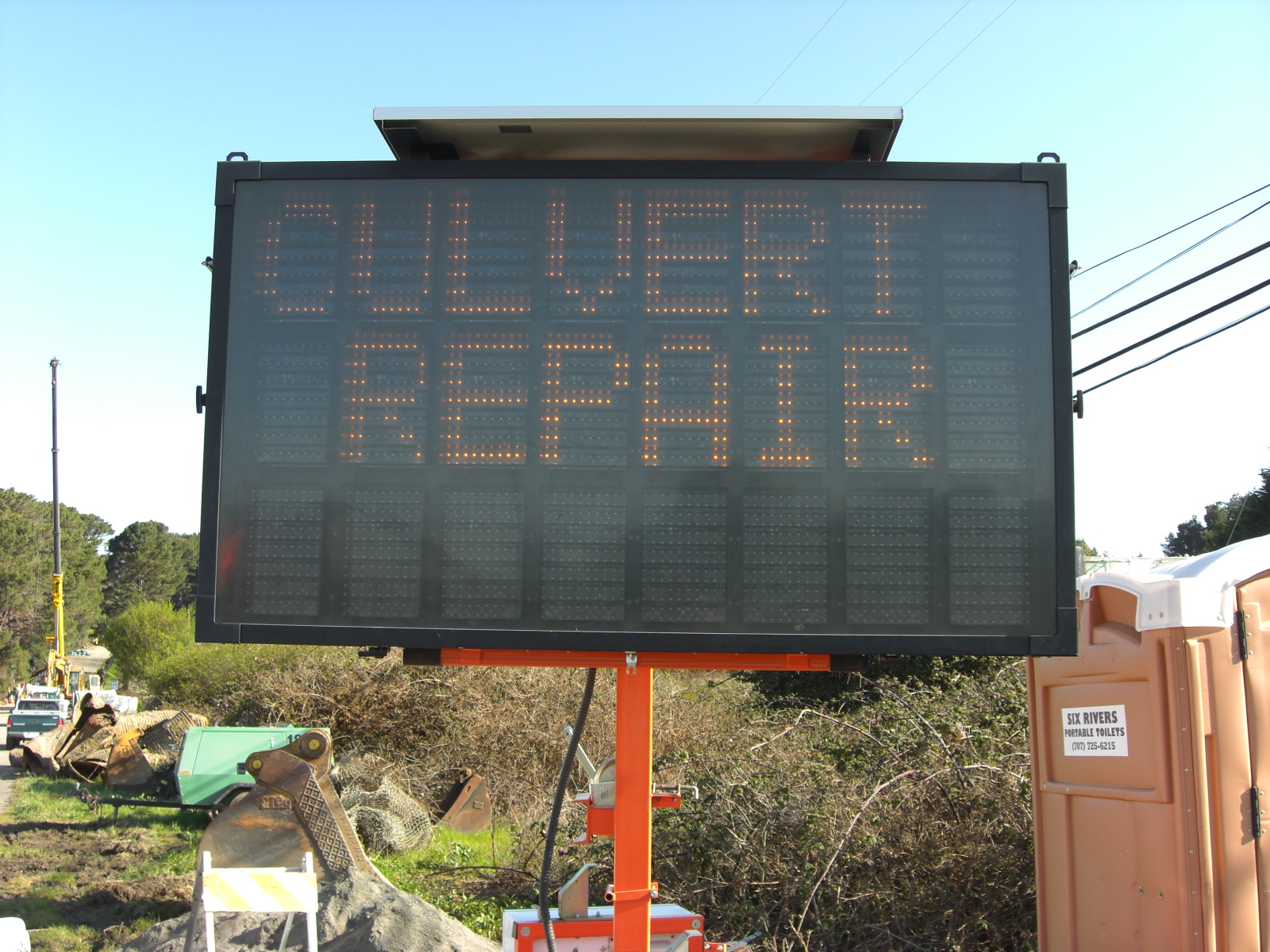
Culvert repair are being done while AquaDams are being used a cofferdam system to keep the work area dewatered.
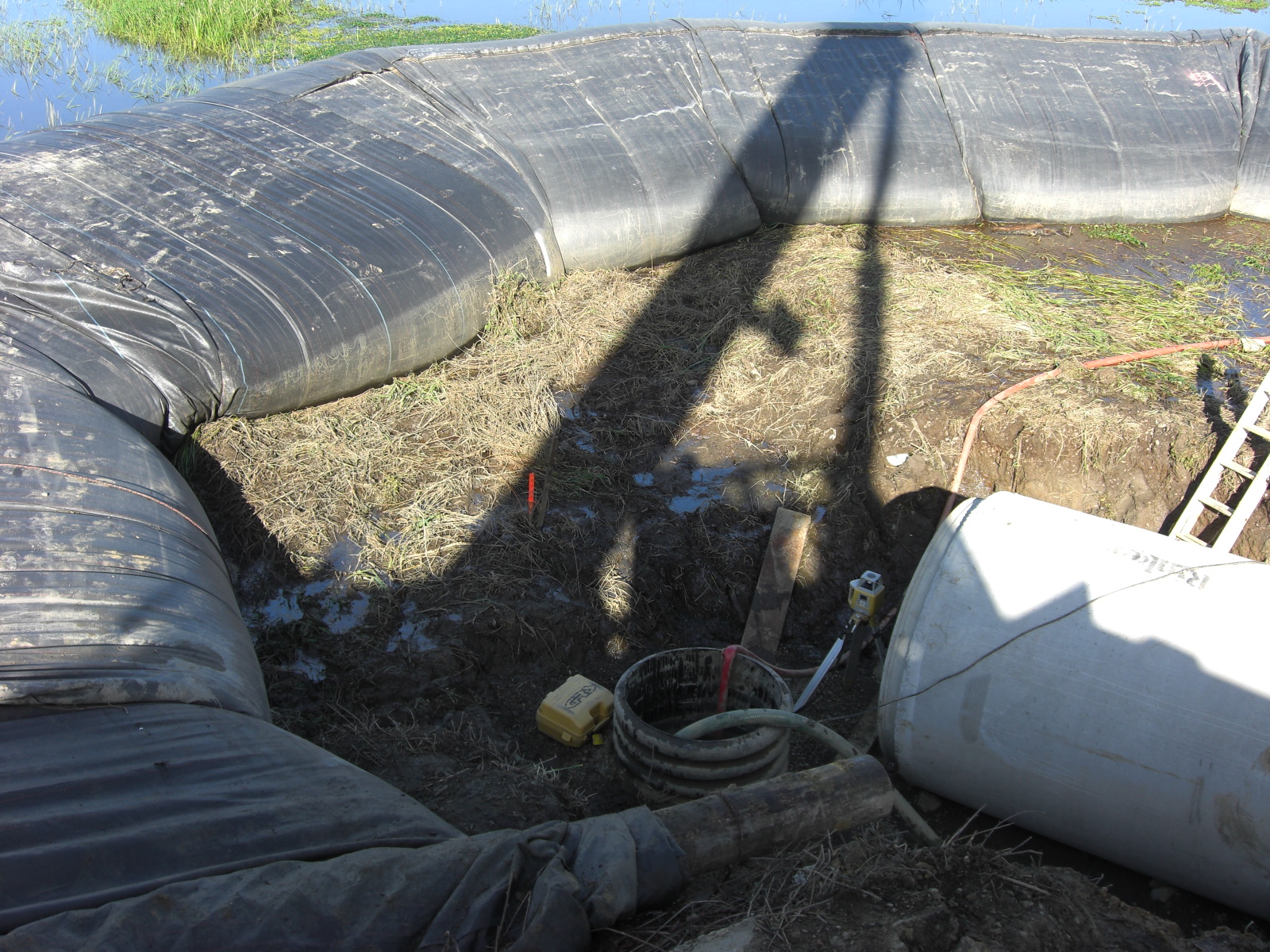
The old culvert has been removed, and a shiny new concrete culvert is being placed. The vertical pipe next to the mouth of the culvert is the low point of the work area. All seepage and other water drains to this point and gets pumped out through the red hose.
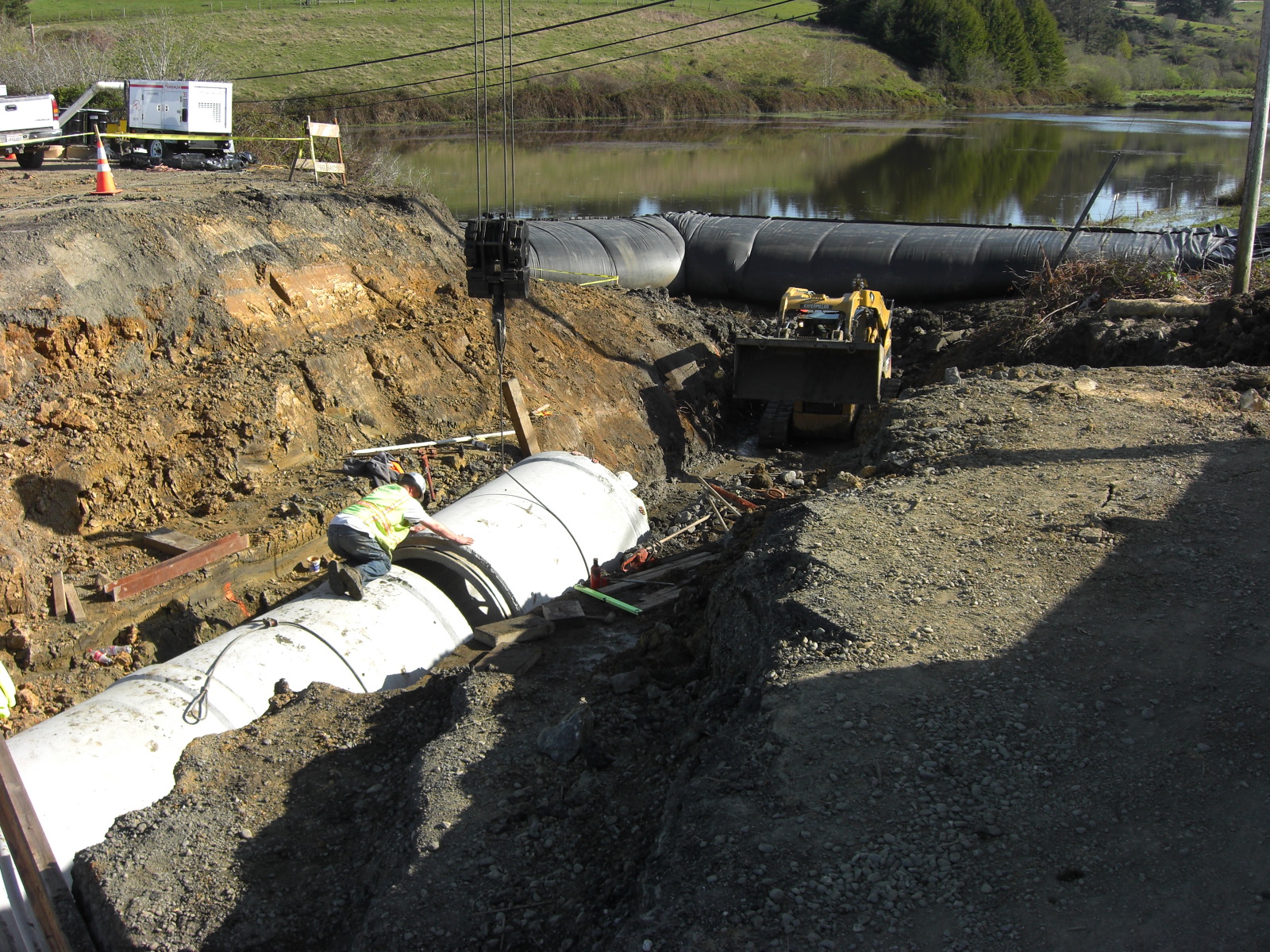
The shorter 8' AquaDam® is holding back a small pond created by runoff from the hills. It's as full as the day it was installed.
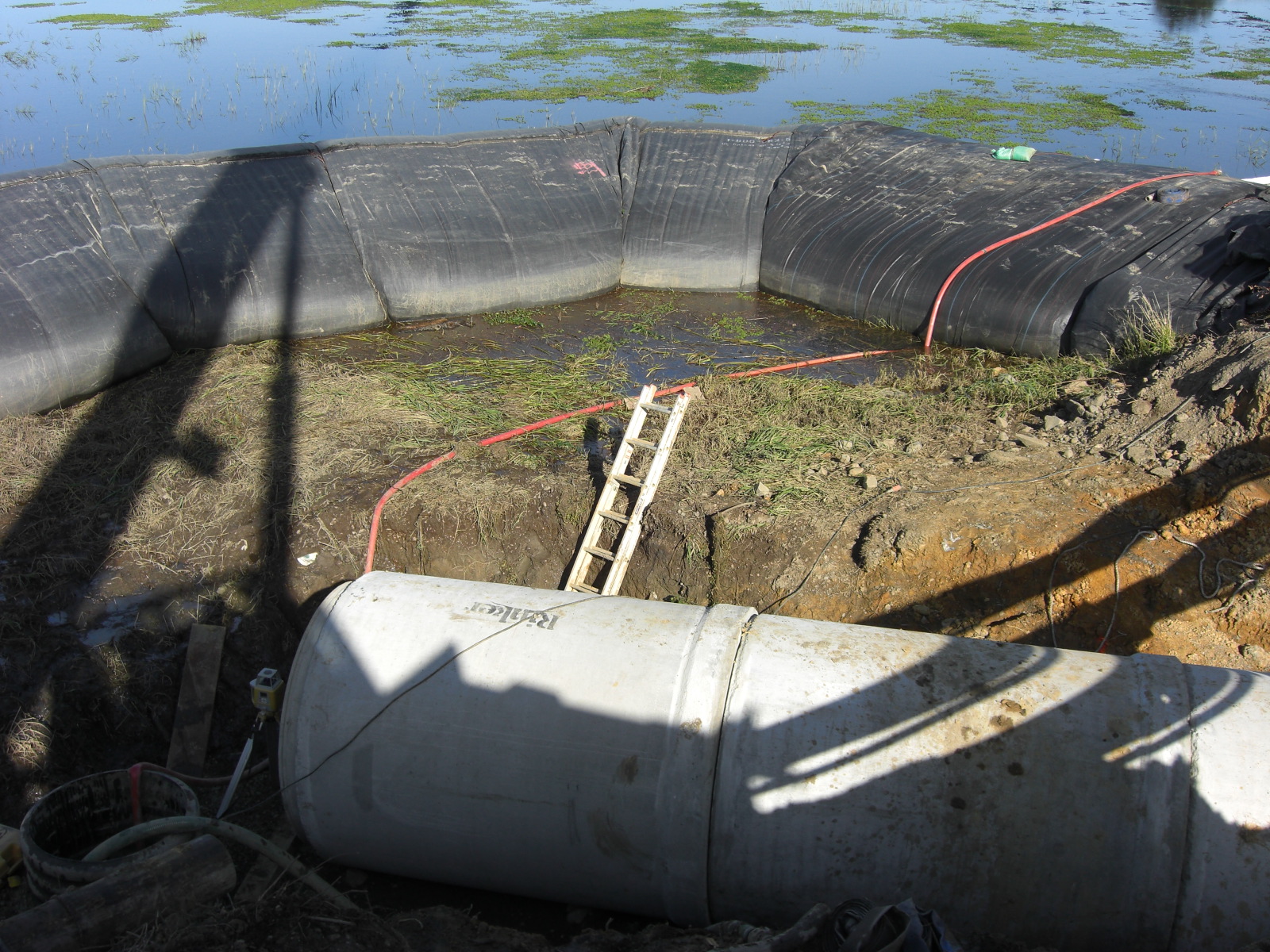
The longer 8' AquaDam® isn't holding up so well. There may have been some kind of sharp obstruction that punctured the AquaDam® as it was filled with water, causing a slow leak. No problem for an AquaDam® though. It needed one (1) 20 minute session of maintenance pumping over the life of the project.
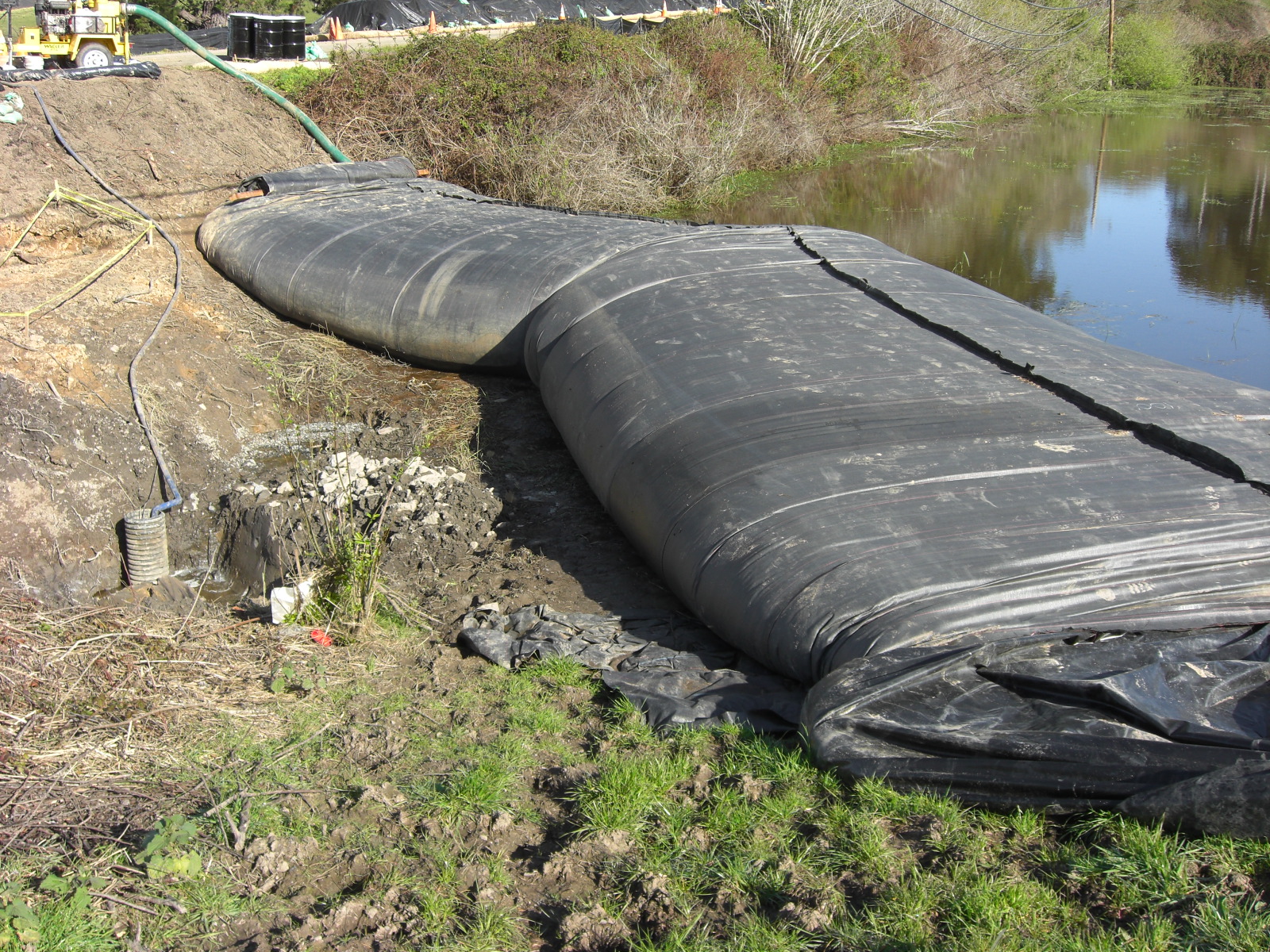
Full view of the shorter 8' AquaDam. The vertical pipe is the low point of this side of the project, with a sump pump pumping any water that collects there. This pipe was later removed because it was unnecessary.
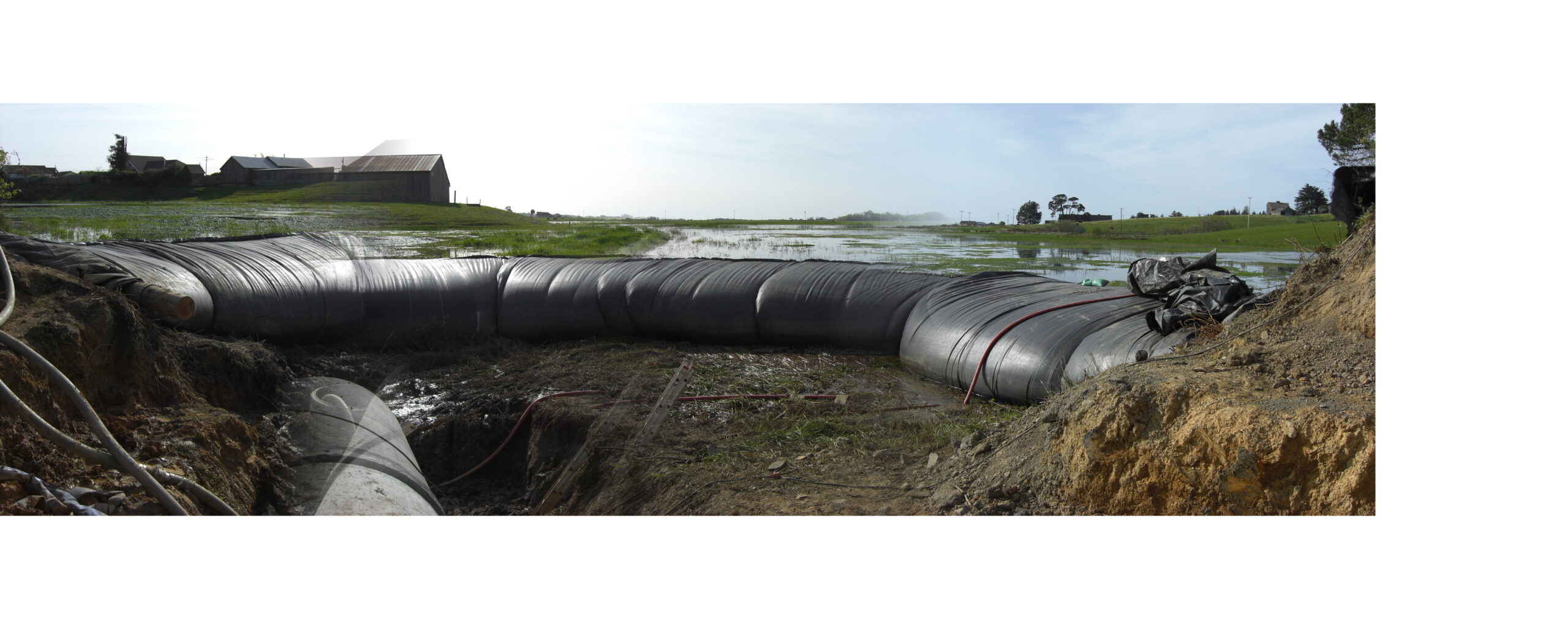
AquaDams don't leach any harmful chemicals into the water. They are the most environmentally friendly way to create a cofferdam. This is a panorama consisting of multiple photos. There may be some ghosting.
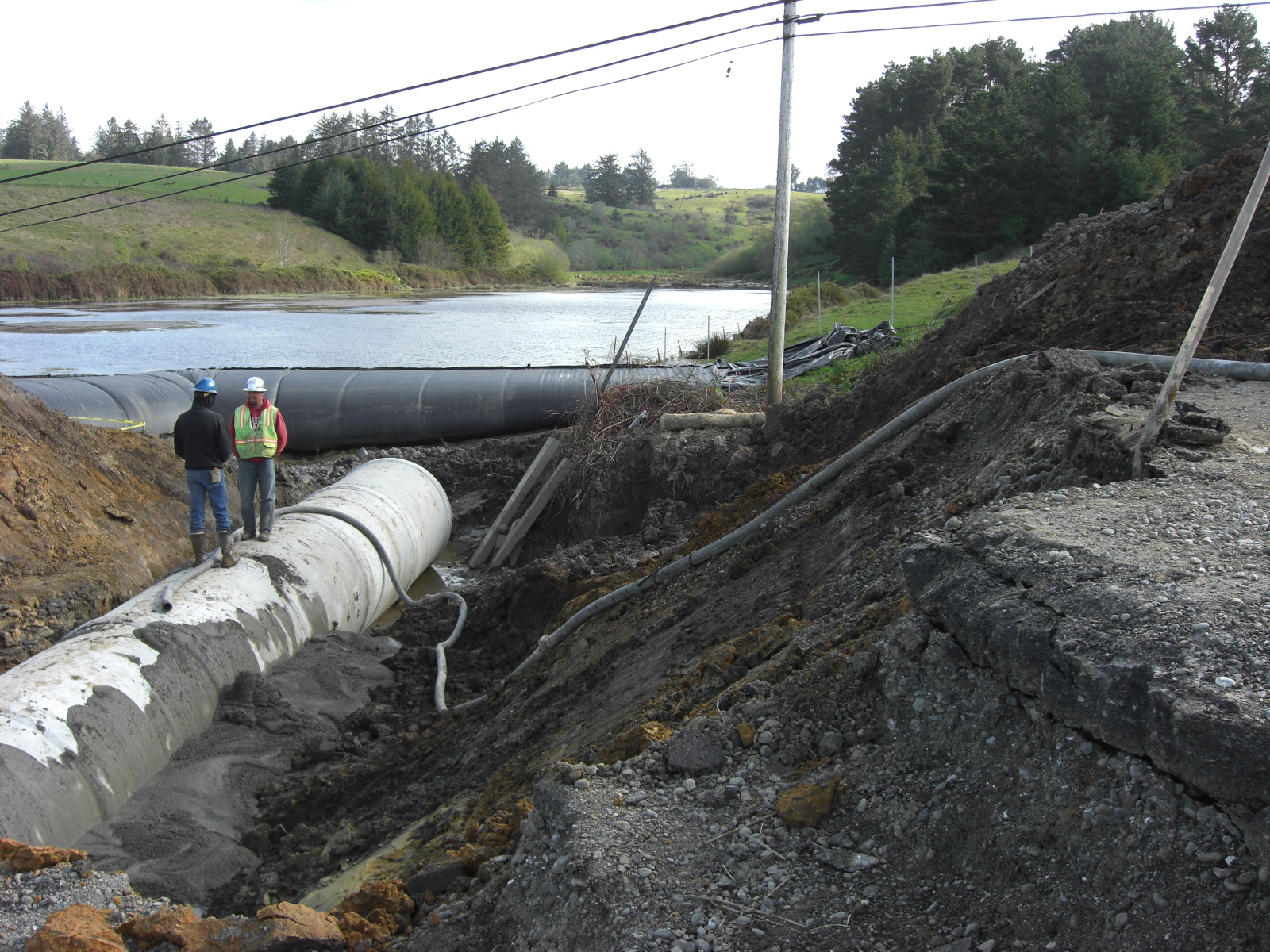
Grout is being poured on top of and next to the new culvert.
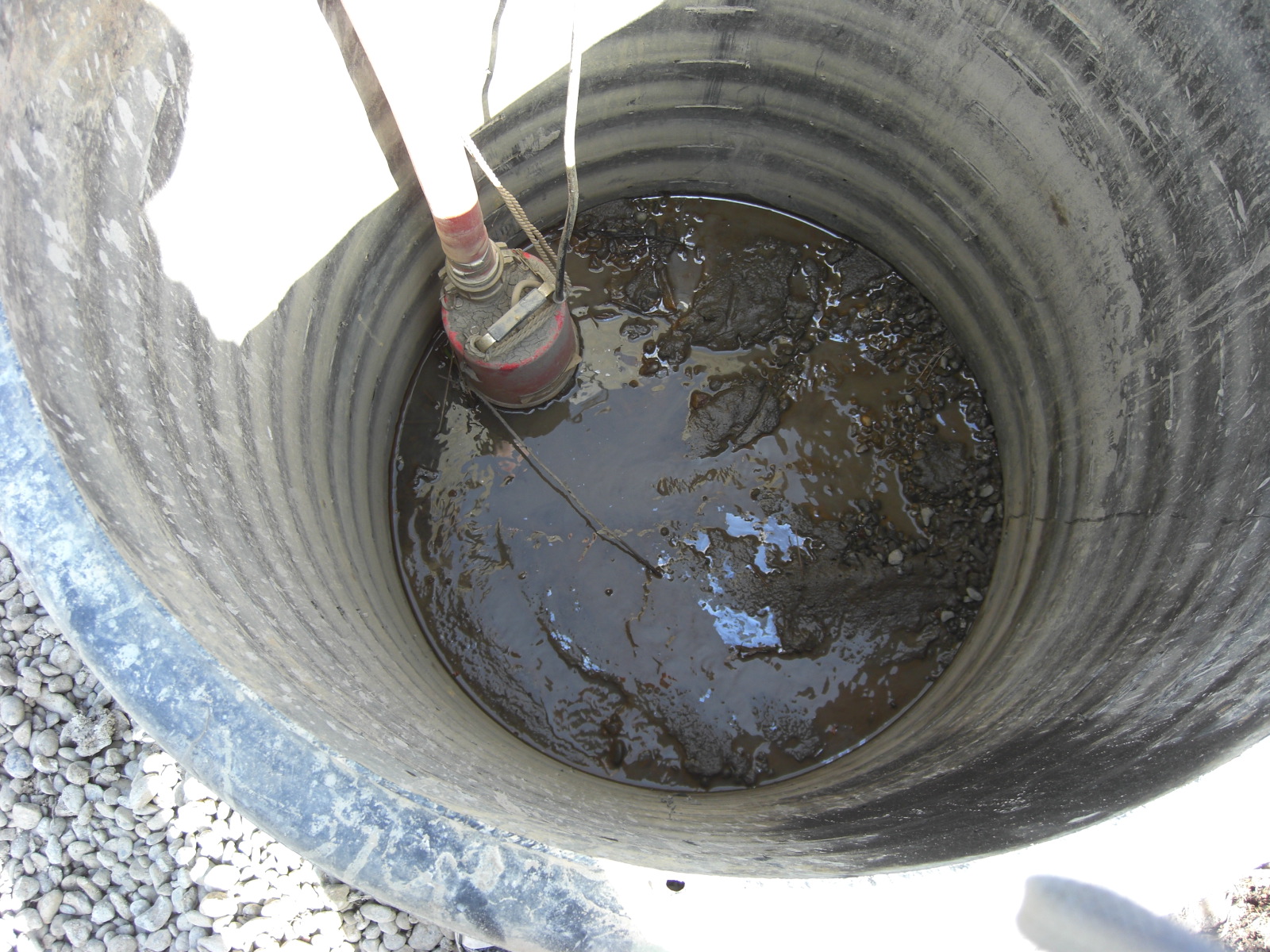
Here is the sump pump mentioned earlier. This pump handled the entire flow of seepage water from underneath the AquaDam. There was very little seepage, but more than on the shorter 8' AquaDam.
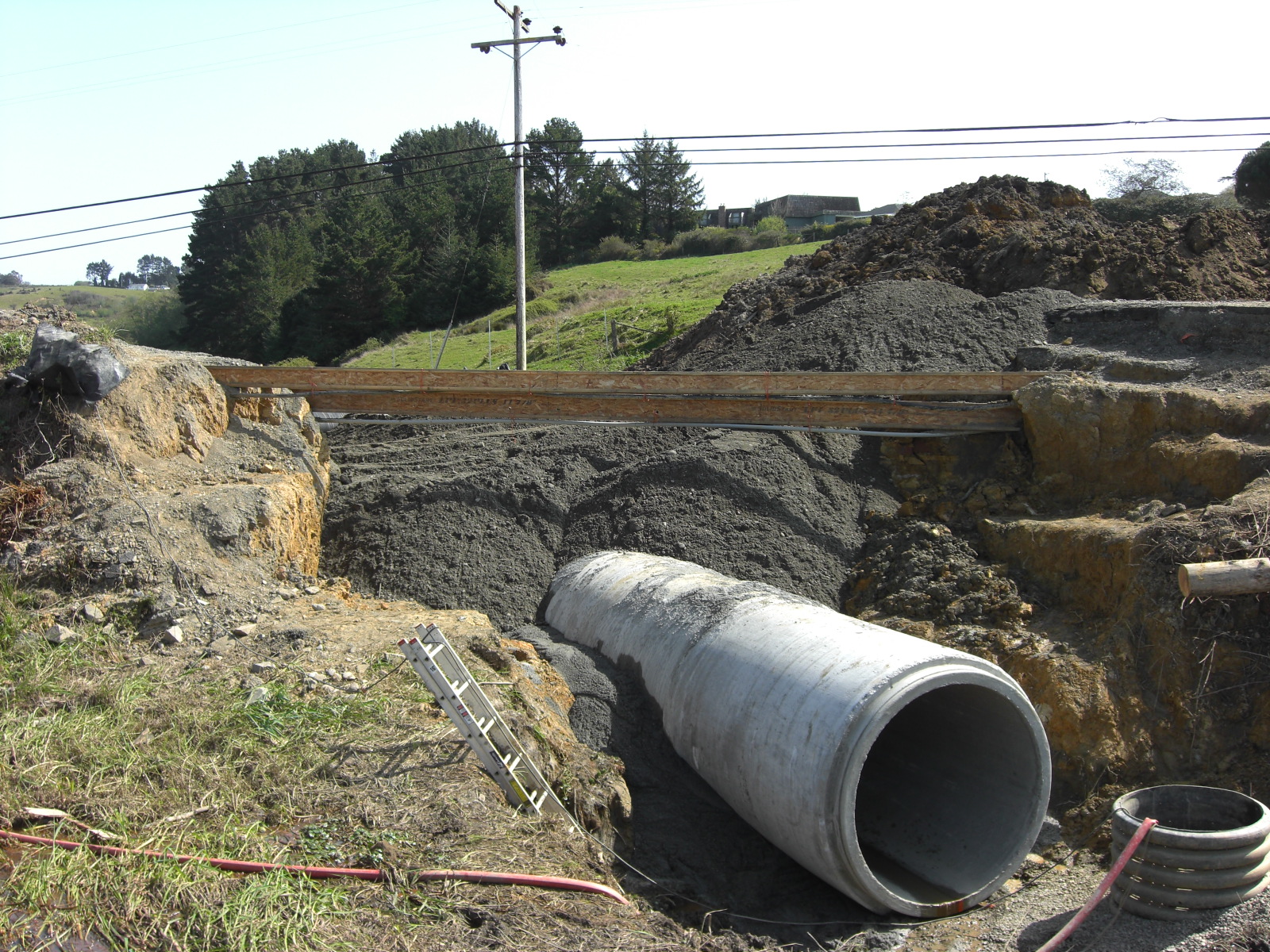
Without the AquaDams holding back the water, the culvert would only be showing a few inches above the waters surface here in this photo.
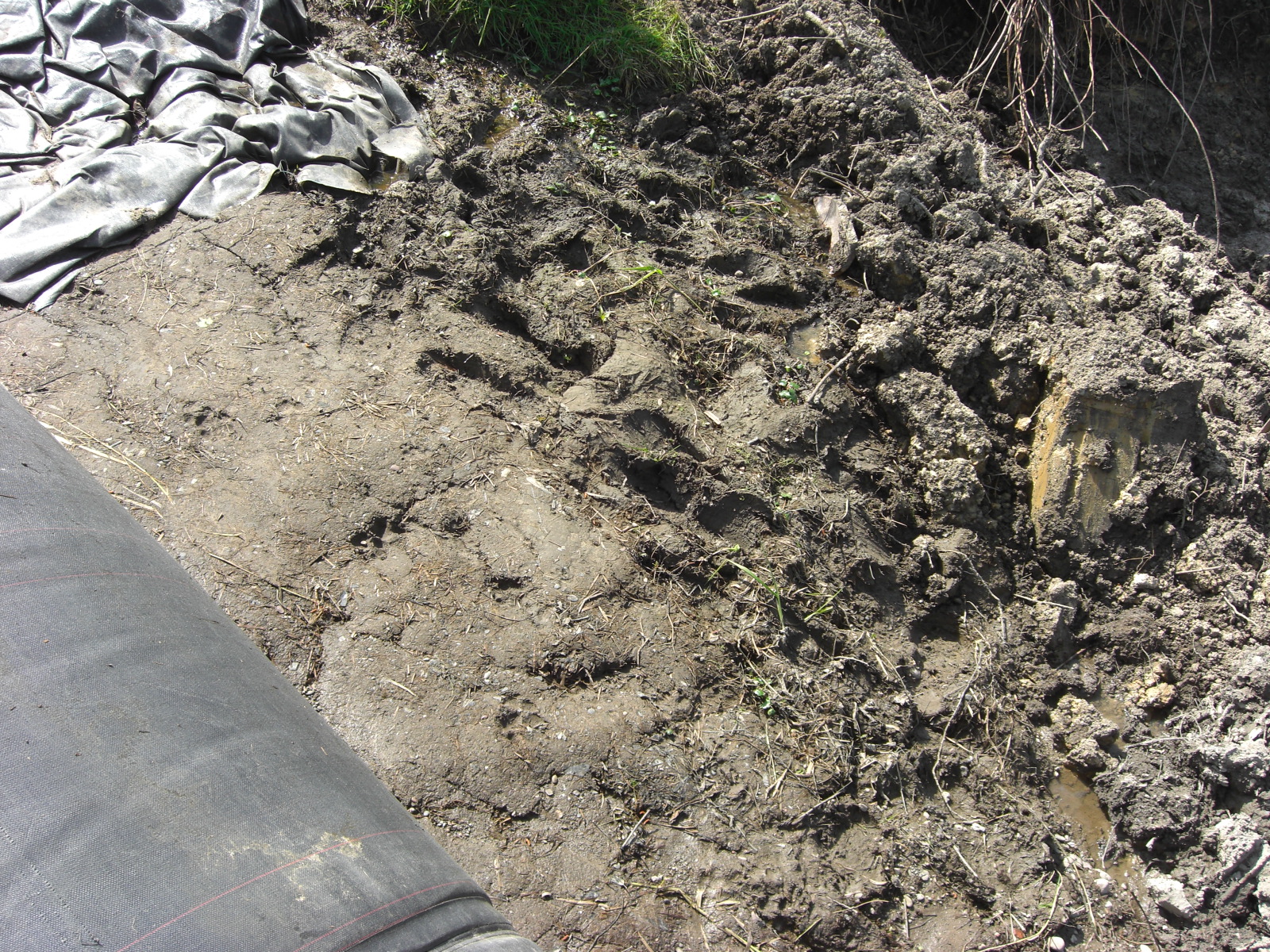
This flattened soil and fabric bear evidence of the lean from the previous high-water event that exceeded the recommended water depth of water being retained. The pressure of the body of water caused the AquaDam® to shift about 2-3' towards the work area. Good job, AquaDam!
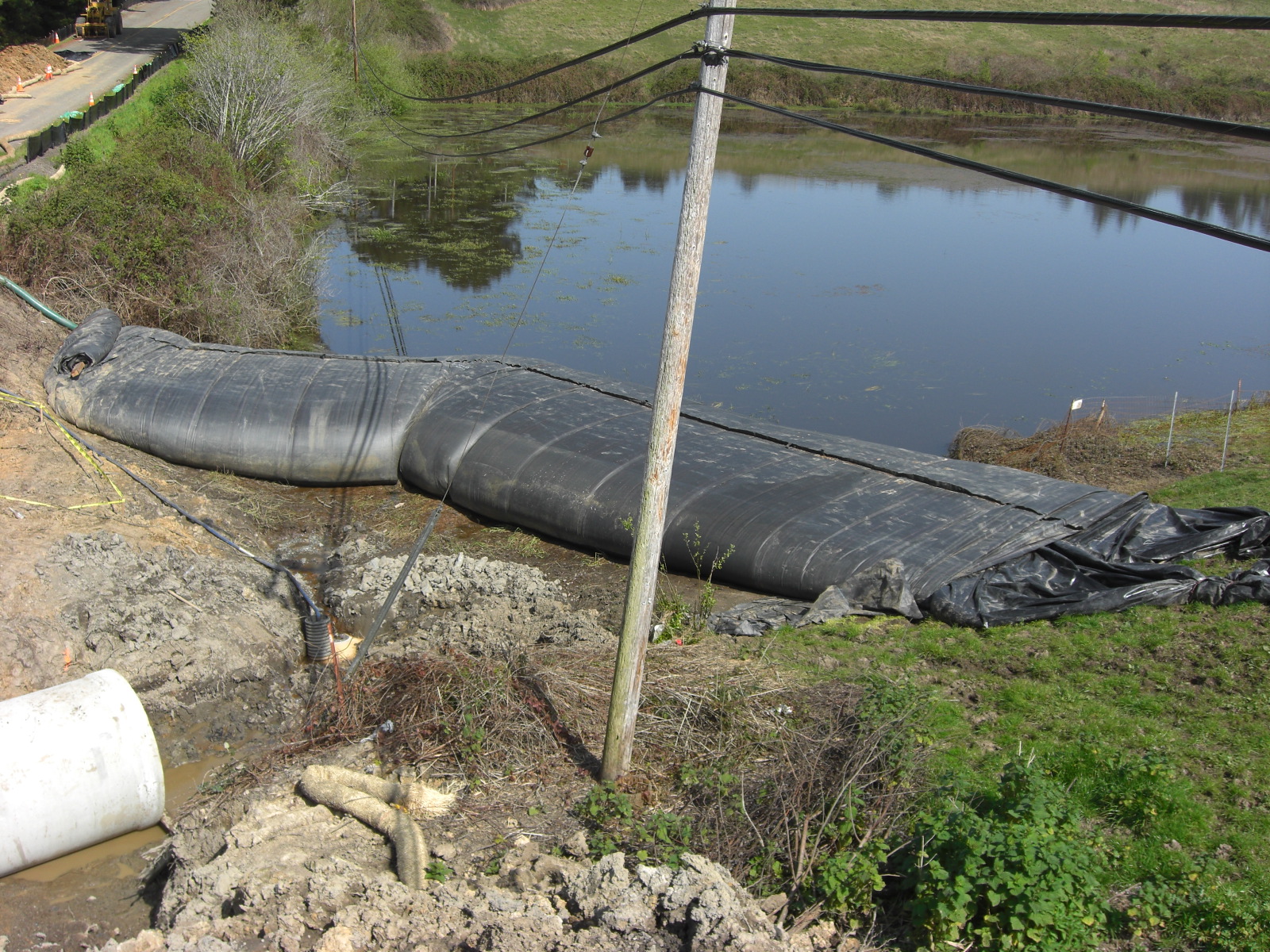
Overview of the shorter 8' AquaDam.
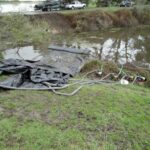
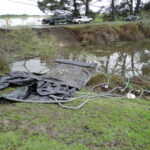
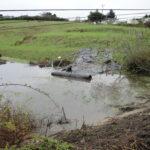
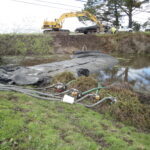
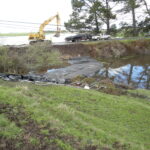
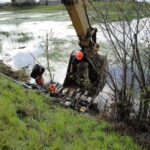
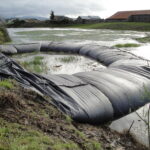
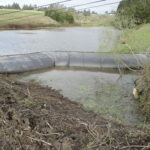
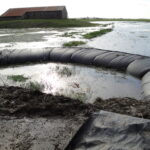
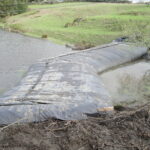
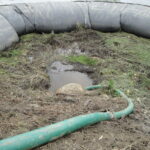
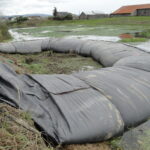
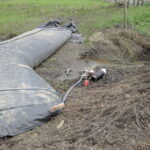
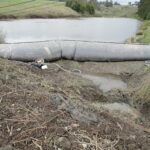
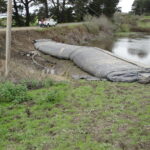
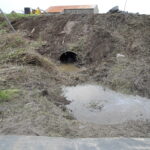
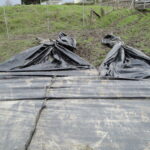
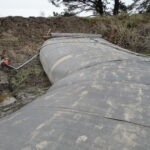
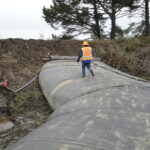
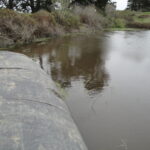
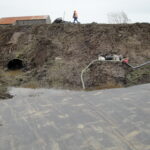
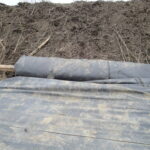
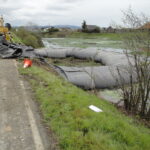
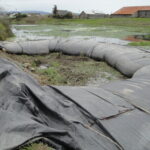
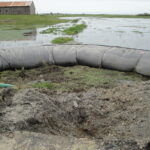
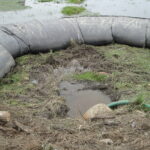
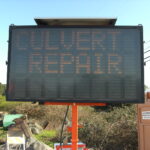
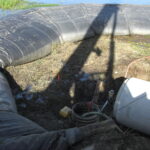
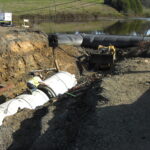
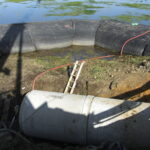
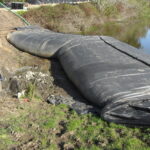
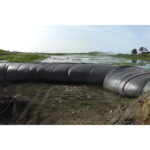
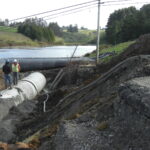
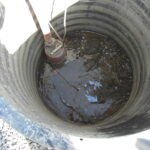
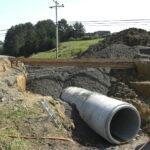
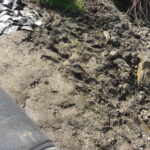
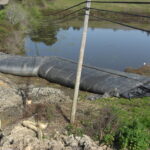
Culvert Replacement, Installation, During, Removal
